Trip report: Uzbekistan
Visited in April 2021
Uzbekistan is Central Asia’s biggest tourist magnet. Although you cannot call Uzbekistan a mainstream destination yet, every year more and more people travel to this country known for its magnificent monuments. From 2016 to 2019, the number of tourists in the country almost tripled. Then came the pandemic…
For me personally, Uzbekistan was the 16th country I visited during the pandemic and the 114th country in total. Besides, it was my third Stan-country in Central Asia after Turkmenistan and Kyrgyzstan, and to be honest, it was also one of the remaining countries I was looking forward to the most. Therefore, I took advantage of the days off at Easter to spend five days in Uzbekistan together with my buddy Matt.
The flight plus the arrival in Uzbekistan offered some memorable moments. On the almost five-hour flight from Istanbul to Tashkent, the Uzbek capital, the flight attendants were mainly busy asking several passengers over and over again to wear their masks properly. In the nearly twelve months that I have now been traveling during the pandemic, one thing has struck me. In every culture there are mask deniers, but in the ex-Soviet states they are definitely over-represented.
Three rows in front of me sat an approximately 50-year-old Russian man who was reminded at least fifteen times that he should wear his mask properly. Each time he apologized and put it on, only to pull it back under his chin 30 seconds later. Poor flight attendants. But what are you gonna do with such passengers? Tell them to leave the plane?
The mask deniers were annoying. What really made me nervous, though, was the entry form the flight attendants gave us during the flight. By signing it arriving passengers acknowledge that they must go into quarantine for 14 days and accept a severe penalty for non-compliance. When I was planning this trip, I read that Uzbekistan dropped the quarantine in February. Nevertheless, I could not rule out the possibility that the entry rules had been changed a few days ago and I did not take notice of it. I eventually signed the form, but crossed out one word. I suspected that the form was out of date anyway.
At the customs check, I was then told that the form was indeed outdated and that quarantine was no longer required. However, my state of mind then quickly changed from relieved to baffled when the lady behind the plexiglass yelled “LOOK AT ME!!!” I assumed I would have to look to the camera for a photo. Practically in no country do immigration officers shine with friendliness. To expect anything else from the authorities in a post-communist Soviet country was perhaps a bit naïve of me.
The cab driver at the airport even wanted to top that. He wanted to charge double the price you usually pay for the ride from the airport to the city. When I replied that this was too much, he gave in. However, he could not refrain from mimicking me with “too much, too much”. As with immigration officers, cab drivers all over the world are usually not the ones who present their country at its best to travelers. At least not the ones operating at the airport.
Fortunately, the ride from the airport to the city center only takes 15 minutes. We reached our hotel at about 2:30 in the morning and went straight to bed. After all, we had a lot to do the next day.
One day in Tashkent
As we went to bed quite late, we started our sightseeing tour of Uzbekistan’s capital city in the late morning. It was our only day in Tashkent, which is in my opinion enough for this city anyway.
First of all, let’s say that Tashkent is huge. The sights are spread over a large area and since we visited most places on foot, we ended up with over 28,000 steps by the end of the day. To get around faster you can use Yandex, the Russian Uber, or the metro. I’ll come back to the metro later. Yandex turned out to be a good option, though. In most cases, the car arrived in about 2-3 minutes and the ride usually cost about 10,000 som (<1$).
When you get around in Tashkent by car, you notice that the city has several kilometer-long, multi-lane roads that run in a straight line through the city. On these roads, cars, most of which are white Chevrolets, speed through the city like maniacs. That someone is going over 100kmph is not uncommon and in our five days in Uzbekistan we witnessed several near crashes.
What completely fascinated me, however, is that drivers stop at crosswalks without traffic lights and give way to pedestrians. I can’t think of any country outside of the Western World where that is happening. In most countries, the law of the jungle applies on the street and as a pedestrian, you cross the street at your own risk.
Well, so much for logistics, let’s talk about the Uzbek capital. Tashkent is a typical ex-Soviet city featuring a mix of communist architecture, trendy shopping stores, squares with statues and in this case both mosques and churches. Like all other Central Asian countries, Uzbekistan is a Muslim country. However, due to the not so small Russian minority, Christianity is also strongly represented in the country, which explains the churches.
What I also noticed immediately and surprised me somehow was that Tashkent is not a very lively city, although 2.4 million people live there. We were in the city on a sunny Friday and it felt kind of empty. Tashkent is by no means a ghost town like the Turkmen capital Ashgabat (probably the weirdest city in the world), but the Kyrgyz capital Bishkek was comparatively much more vibrant.
Our first stop on our sightseeing tour was the Amir Timur Square. Like every Central Asian country, Uzbekistan has a national hero, the 14th century military leader Timur. The country still honors this gentleman with countless statues and squares. The fact that you never see these statues without locals posing for a photo in front of them proves how strong the personality cult around this general still is today.
Personality cult seems to be generally widespread in this part of the world. Later on the trip we saw a large statue of Islam Karimov, the ex-dictator of Uzbekistan. Karimov led Uzbekistan from the collapse of the Soviet Union in 1991 until his death in 2016. The new president, Shavkat Mirziyoyev, rules the country with less of an iron grip than his predecessor, but calling him a democrat would be ridiculous. Funnily enough, a dictatorship doesn’t seem to be a negative thing at all for most people in this region. In my travels through several countries of the former Soviet Union, I have found that people tend to see a dictator as a strong leader who keeps peace and order in the country, rather than as someone who oppresses them.
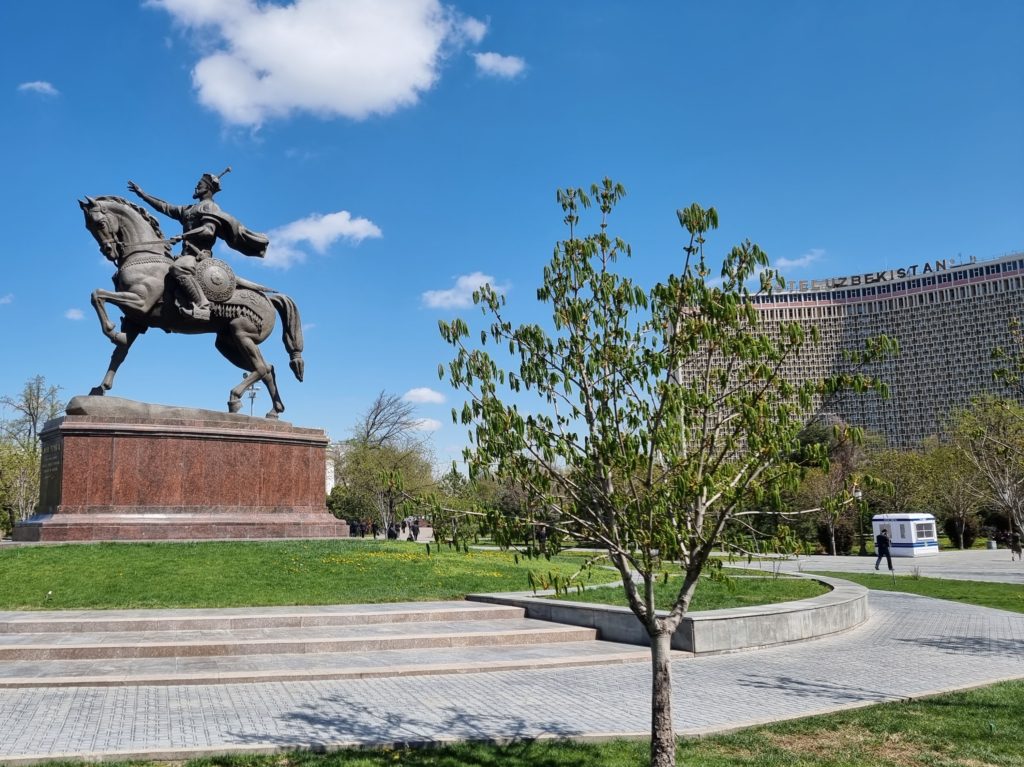
Right next to Amir Timur Square is one of, if not the most iconic building of Tashkent. The Hotel Uzbekistan, a typical building in communist brutalist architecture. It is one of the biggest hotels in the city, which seems to be okay in terms of price, but the lousy reviews don’t make you want to stay there.
On the top floor there is a bar with a nice view over Amir Timur Square. After we had a drink there and wanted to leave, the concierge of the hotel approached us. He asked if we were guests of the hotel, which we denied, whereupon he said that we were welcome to come back in the evening if we were in the mood for “nightlife”. “I can organize massage… with rooms…” he said, as if it was the most normal thing to offer. I had a bit of déjà-vu from my Turkmenistan trip when I was also offered the same thing shortly after arriving at the hotel.
In the course of the afternoon, we visited the remaining sights of the city, such as the Memorial of the Victims of Repression and the Hazrati Imam Complex. What impressed us the most, however, were the metro stations, which for me personally are the best sights of the city.
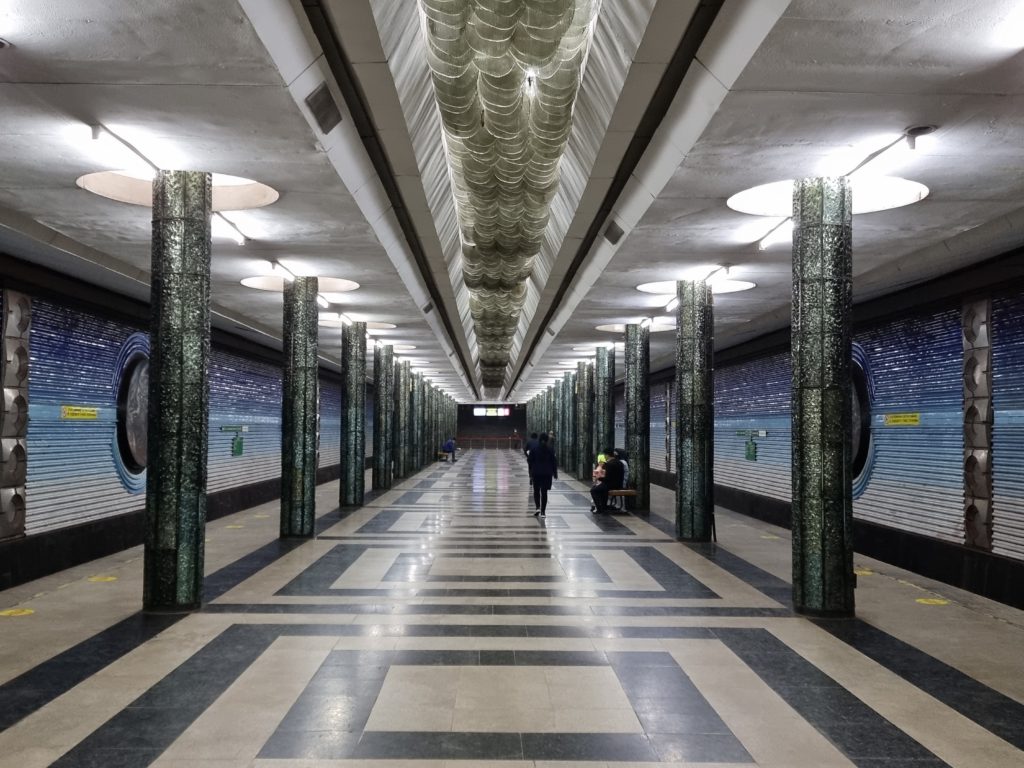
There are 18 metro stations in the city, all of them look different and remind more of museum halls than of a metro station, comparable to the metro stations in Moscow. The metro is a very good means of transportation in Tashkent and per ride you pay 1400 som, which is about 10 cents, regardless of how many metro stations you visit. For this reason, we spent about two hours that day going from station to station taking pictures of these gems.
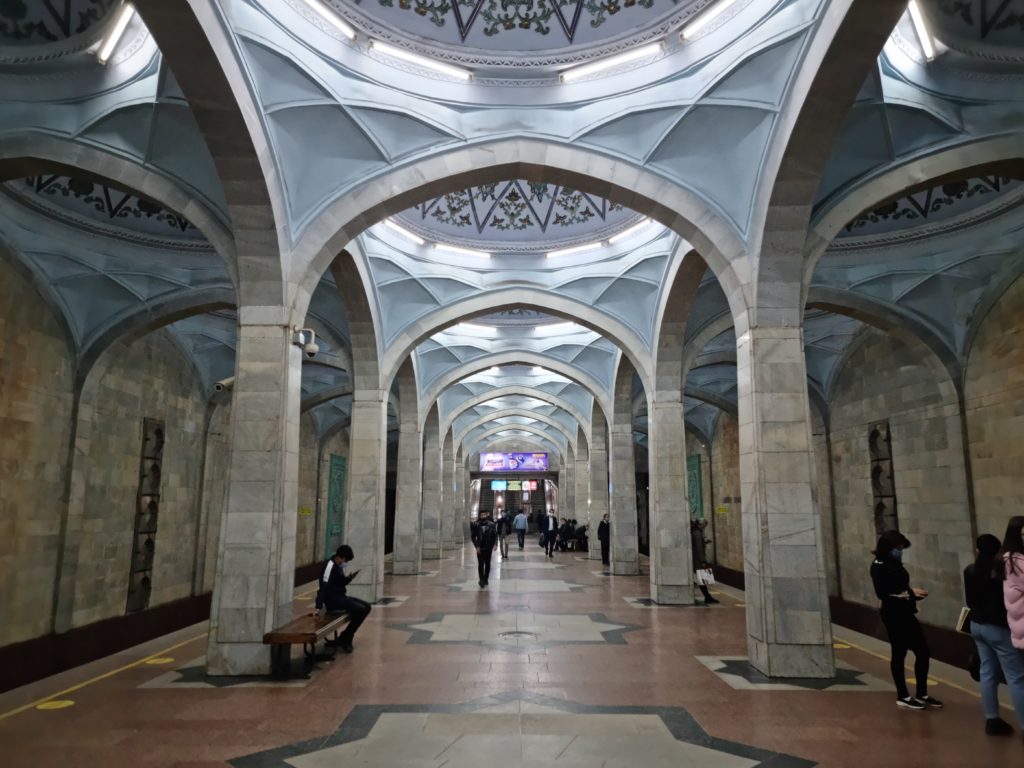
By the way, taking pictures of the metro stations was strictly forbidden a few years ago. Although it is now allowed, you should still beware of the guards in the stations. One of them didn’t like the fact that I took a picture of a station where he can be seen sitting on a bench as a tiny detail in the picture. As a result, he asked me to delete the photo, which I did in front of him, only to later retrieve it from the bin.
The metro stations were definitely my highlight of Tashkent. Apart from that, I found the capital of Uzbekistan just meh. The city was too big for me and not lively enough, but also quite okay to fill a day.
Bukhara and Samarkand
Anyway, people don’t travel to Uzbekistan to visit Tashkent but the cities of Bukhara, Samarkand and Khiva with their historical sights. The next three days we spent in Bukhara and Samarkand. Bukhara is a 4-hour train ride from Tashkent. Samarkand is located between the two cities (2.5 hours from Tashkent, 1.5 hours from Bukhara). Both are interesting cities but completely different.
While Bukhara is more of a larger village, Samarkand is relatively sprawling. In Bukhara, the sights are all within walking distance, as the city is fairly compact. In Samarkand, you have to take a cab from time to time (unfortunately, Yandex does not work in both cities). We paid a flat rate of 10,000 som per ride in Samarkand.
If you need a cab in Samarkand, it doesn’t take long until one stops at your hand signal. Sometimes there are already people sitting in the car, so the ride turns into an UberPool experience. It can also happen that a normal car stops while you are waiting for your cab. Due to high unemployment, some Uzbeks temporarily become cab drivers without owning a real taxi. The price, however, is the same as for a normal cab.
Another difference between the two cities is that in Bukhara there is a central square (Lyabi Hauz, also Labi Hovuz) with hotels, restaurants and cafes. In Samarkand you could call the Registan square the central point of the city. But it is actually not a good place to have a cup of coffee and do people-watching. The cafes, restaurants and so on are mostly outside the center.
Both cities are amazing in terms of sights. However, I would recommend to visit Bukhara before Samarkand. Although Bukhara has great buildings too, the ones in Samarkand are simply in a different league. If you visit Samarkand before Bukhara, you might find Bukhara a bit underwhelming. At least that’s how it would have been for us.
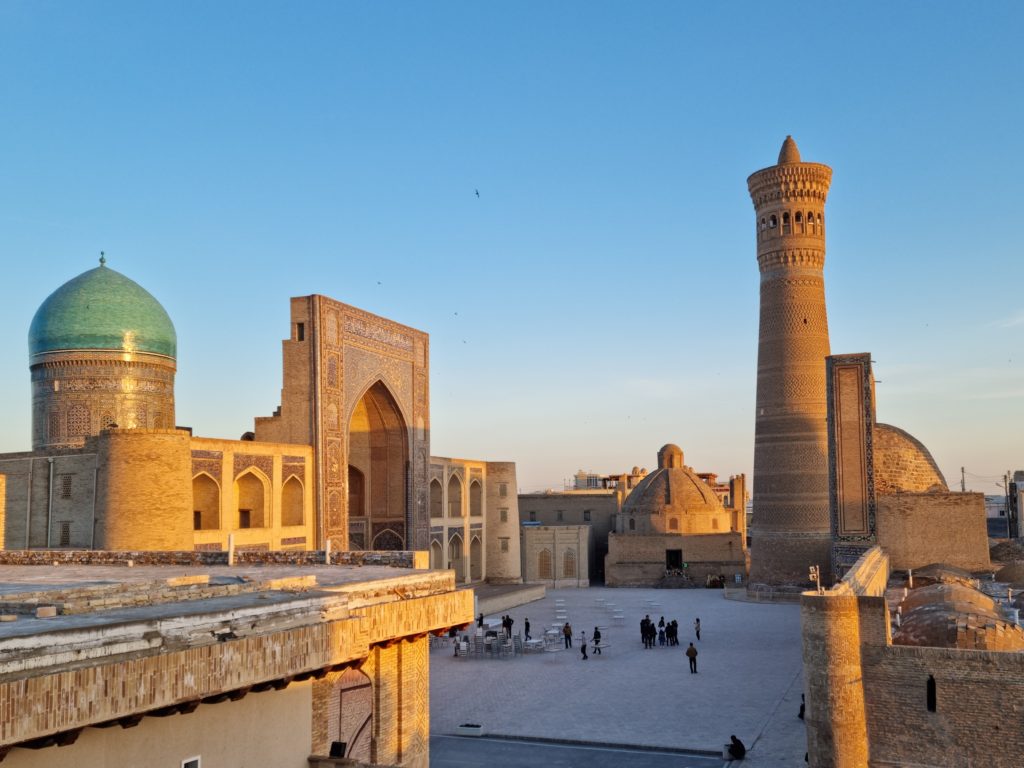
On the other hand, the sights in Samarkand are just jaw-dropping. Hands down, Registan in Samarkand is one of the most beautiful places I have ever seen. The three madrasas look incredibly beautiful both from the outside and the inside. In the evening, the buildings are illuminated, which just looks insane.
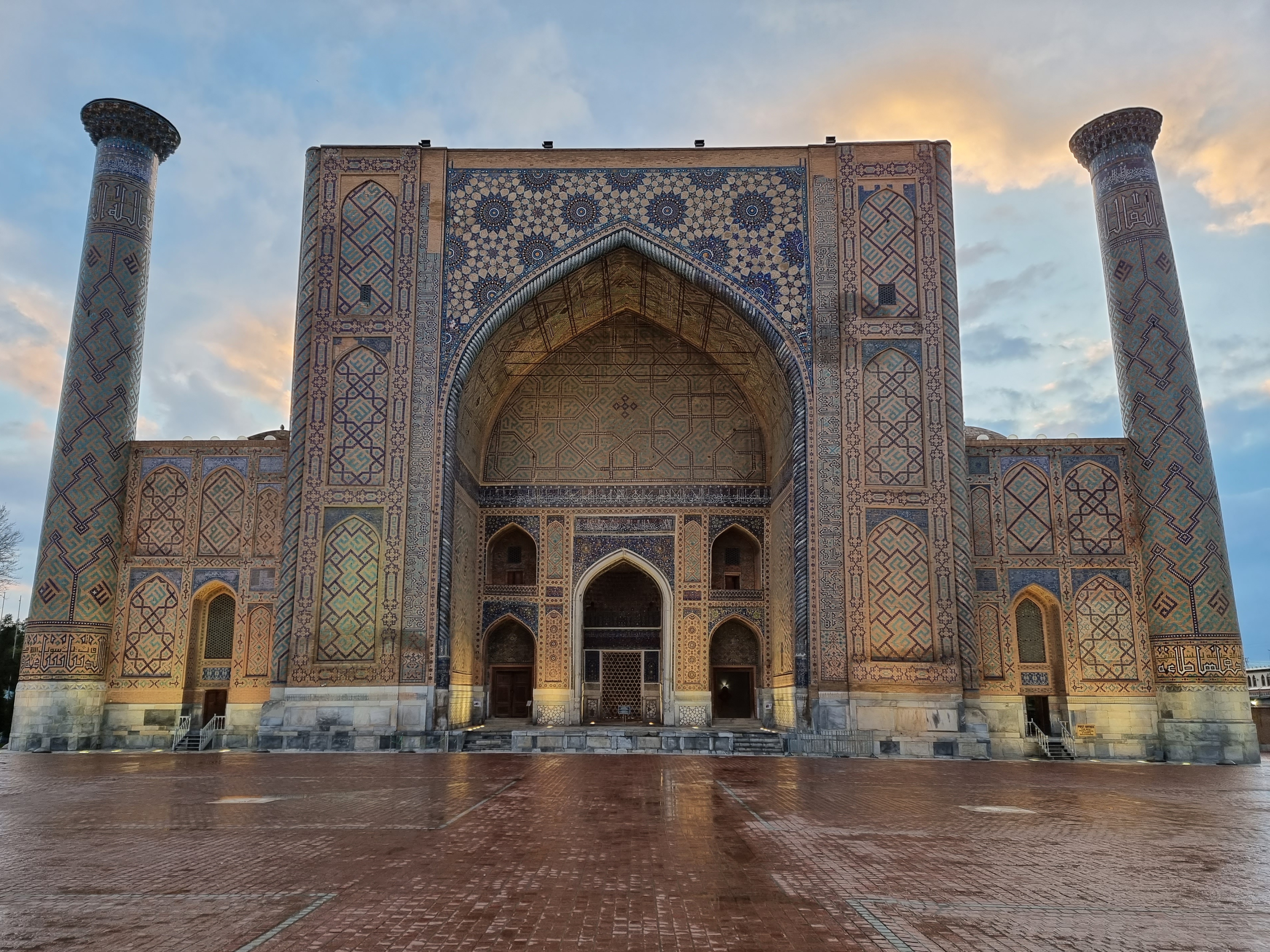
For those lucky enough to visit Uzbekistan in spring or autumn, it is worth entering the square only around 5.30pm. Then you can see it before and after sunset. Since you have to pay an entrance fee for the square (40,000 som), you will have the square almost to yourself at that time. This is another difference between Bukhara and Samarkand. In Bukhara most of the sights are free, in Samarkand each costs between 2’000 and 4’000 som.
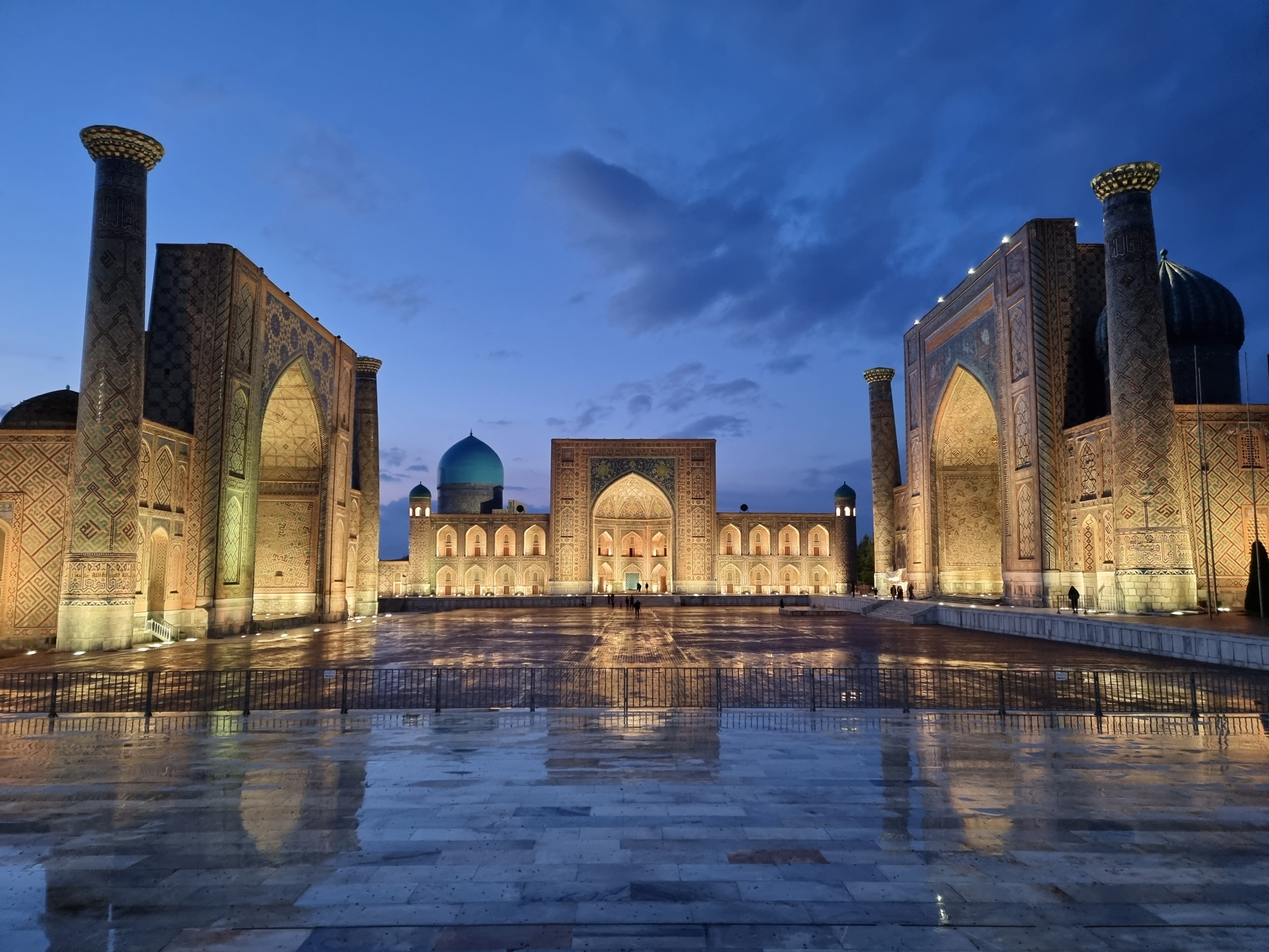
All in all, both cities are worth visiting. Samarkand wins the duel when it comes to sightseeing. Bukhara, on the other hand, I found to be the more pleasant city to stay in. By the way, I think that one full day is enough for both cities. Although you can of course stay longer, one day will give you enough time to see the main sights in Bukhara and Samarkand.
An additional day in Uzbekistan
Since we had five full days in Uzbekistan and the first four were already scheduled for Tashkent, Bukhara and Samarkand (including the transfers between the cities), we had to decide how to spend the last day in Uzbekistan.
We had several options. The most obvious would have been Khiva, one of the most popular places among tourists in Uzbekistan. However, I already ruled out Khiva from the beginning. Not because Khiva is relatively far away from the other cities. The reason was simply that seeing historical buildings three (or even four) days in a row was already enough.
Another option would have been Nurata to see a bit of rural Uzbekistan. Or we could have made a trip to Shahrisabz, the birthplace of Amir Timur. But then we would have had the same problem as with Khiva: again a city with historical buildings, although nowhere near as spectacular as Khiva.
In the end we decided to go to the rural area next to Tashkent and visit the Solar Institute, also known as Physics of the Sun, in Parkent. This is a sight that only very few travelers visit in Uzbekistan. Funnily enough, the solar institute seems to be unknown even to Uzbek tour guides, as some had replied to my inquiry that they had never heard of it.
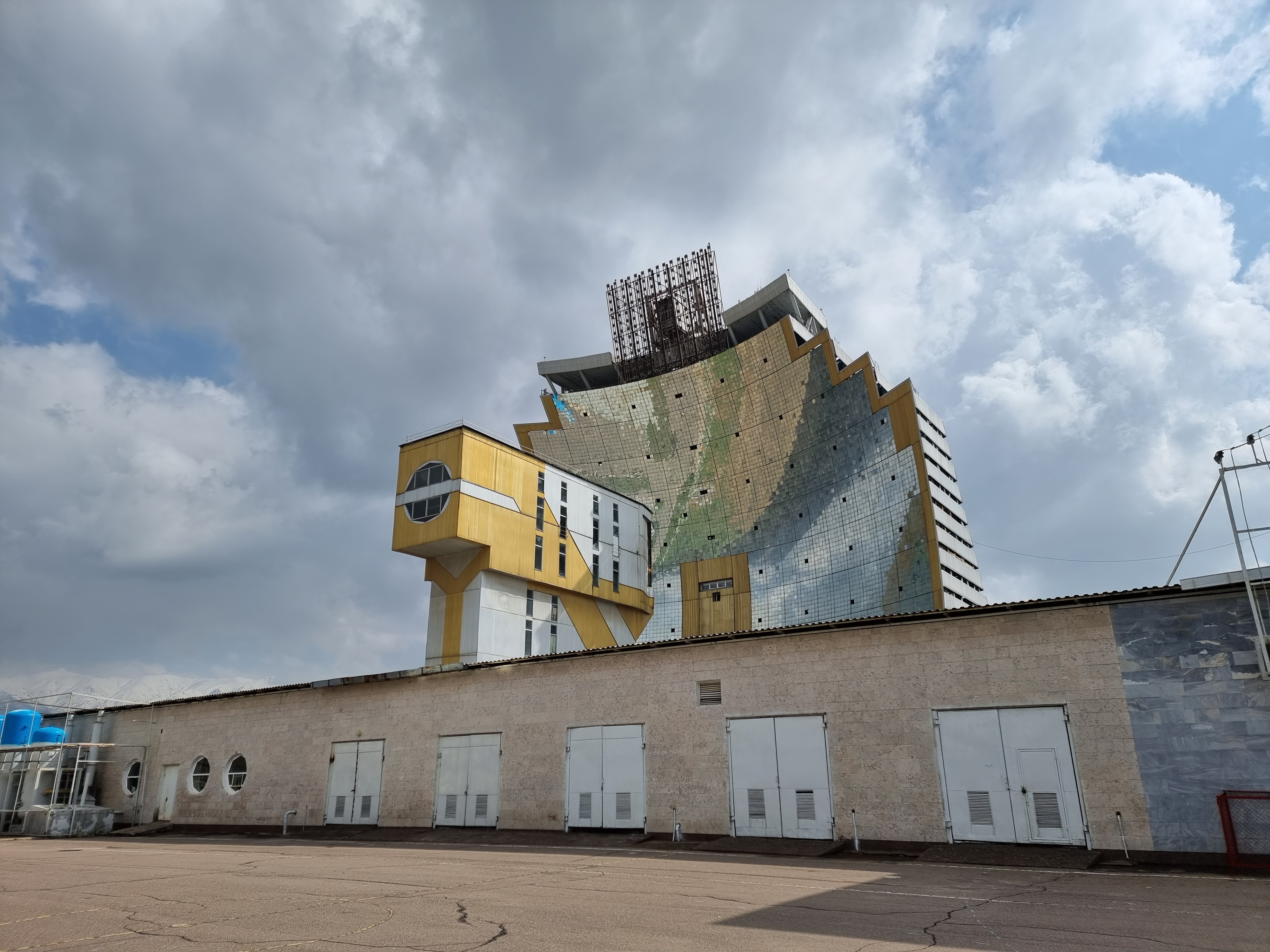
A tour guide offered us a six-hour trip there for $170 and then reacted deeply offended when I replied that I found that quite expensive. Fortunately, I found another tour guide who took us there for $65. That’s quite a difference to the $170, which would be the price in Switzerland for such an excursion. The average income in Uzbekistan is by the way between 50 and 200 euros. However, most of the employed people, even professors or doctors, have a second job because the salary of their first job is not enough.
The guided tour, during which you get an explanation of the facility and can watch some experiments, lasts about an hour. Was the institute worth it? Yes! This gigantic facility looks like a movie prop from a James Bond film. Besides, as already mentioned, it offers a bit of a change from the historical monuments that you see in abundance in Uzbekistan.
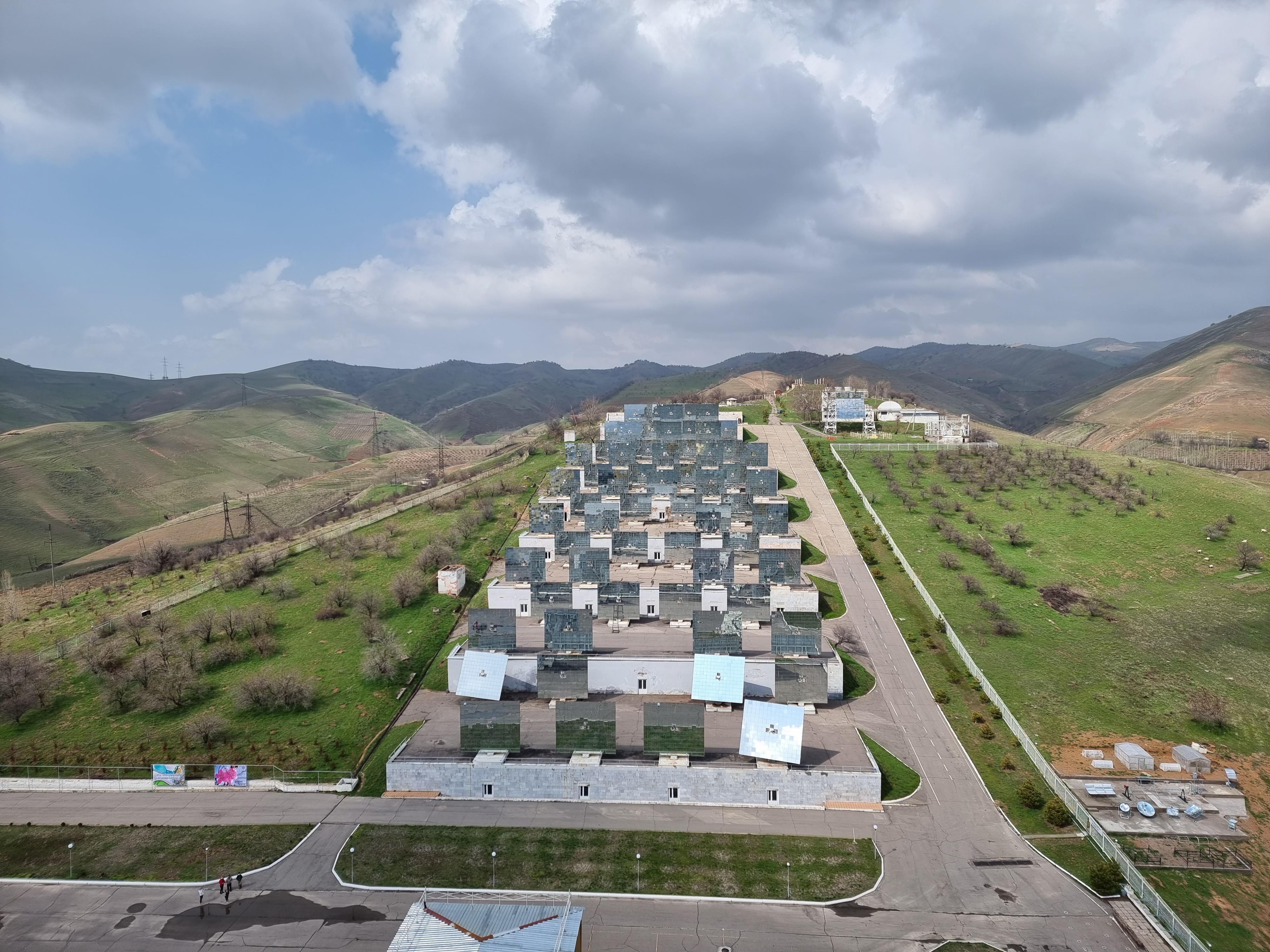
It goes without saying that the Physics of the Sun is not an alternative for Registan. If you want to visit a sight that is off the tourist route, it is a cool half-day trip from Tashkent, though.
My Uzbekistan experience
So, how was Uzbekistan? It was great. After visiting Turkmenistan, Kyrgyzstan and now Uzbekistan, Central Asia is slowly but surely becoming one of my favorite regions in the world. It is difficult to say whether Uzbekistan was better than the other two countries or not because all three countries are unique. What they have in common, however, is that they are all amazing countries to visit.
Do you need a guide to travel Uzbekistan? No, definitely not. Unlike Turkmenistan and Kyrgyzstan, where guided tours certainly make traveling smoother, Uzbekistan is an easy country to explore independently. Booking a tour because of transportation is unnecessary, as it is better to travel by train anyway. You travel at least twice as fast on the train than on the bad roads between cities.
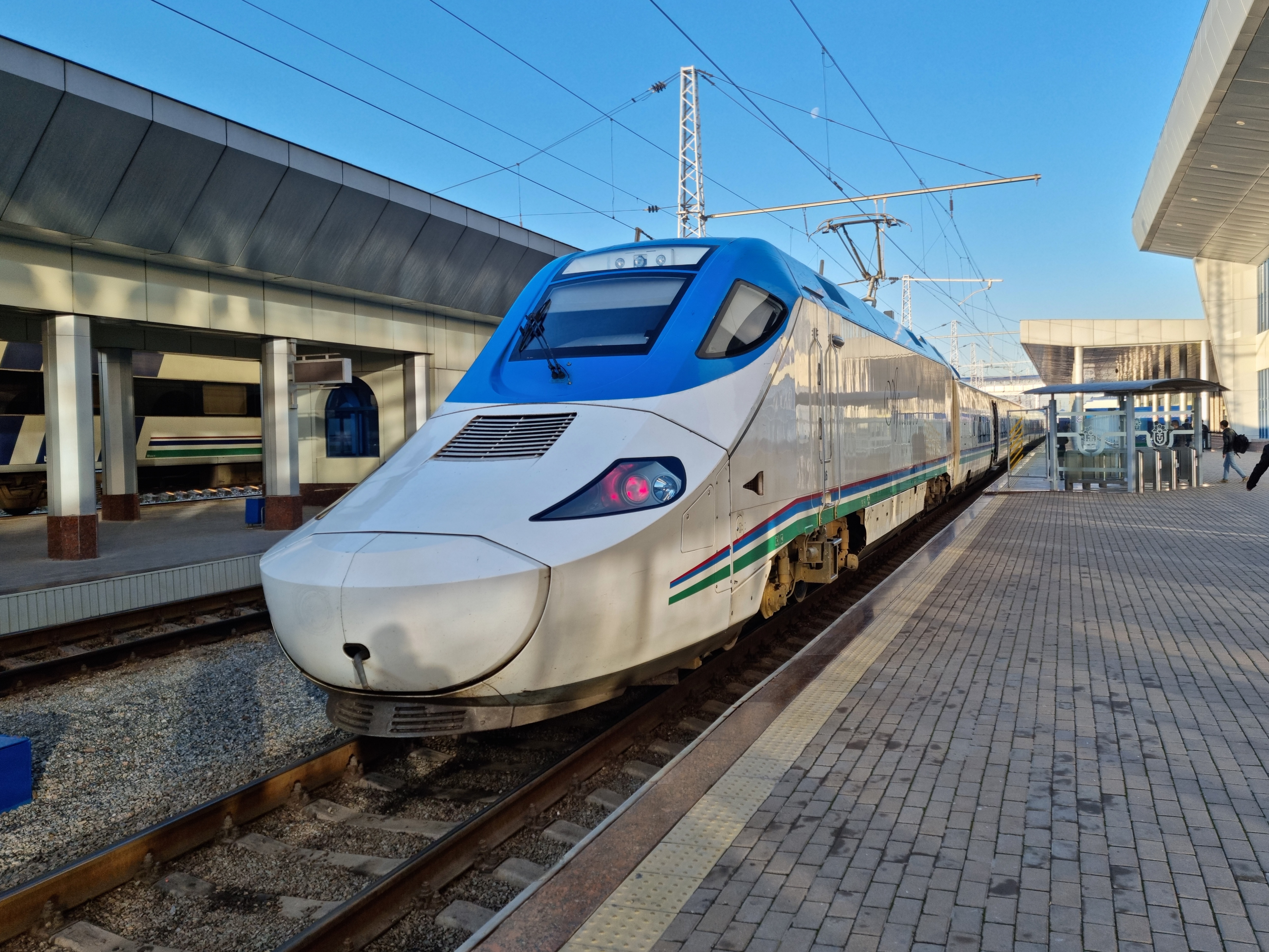
When you book a tour, the tour operator orders the train tickets for you (at a much more expensive price than if you do it yourself here) and makes sure you are picked up at the stations by a local guide and brought back there 1-2 days later. A waste of money if you ask me. If you want a guide when visiting the cities/sights, better book a local guide on the spot yourself.
In general, Uzbekistan is a very affordable country. We paid an average of 30 dollars per night for a clean budget hotel in a perfect location. The three train tickets for the trips between Tashkent, Bukhara and Samarkand also cost around 30 dollars. A twenty-minute cab ride, for example, from the train station in Bukhara to the city center costs $5. In normal restaurants you pay about 2-4 dollars for a meal, in a little bit more noble restaurants with international cuisine it is maybe 15 dollars at the most. However, this includes per person a main course, two or three appetizers, dessert and drinks.
Is there anything I didn’t like in Uzbekistan? Not really. However, I got tired of the Uzbek food relatively quickly and found it very greasy and not very varied. Vegetarians will by the way have a hard time in Uzbekistan. Even dishes without meat have a strong meat smell (because they are fried/prepared in the same oil). The Uzbeks are suspicious of vegetarians anyway. For them, vegetarians are simply people who are too stupid to hunt.
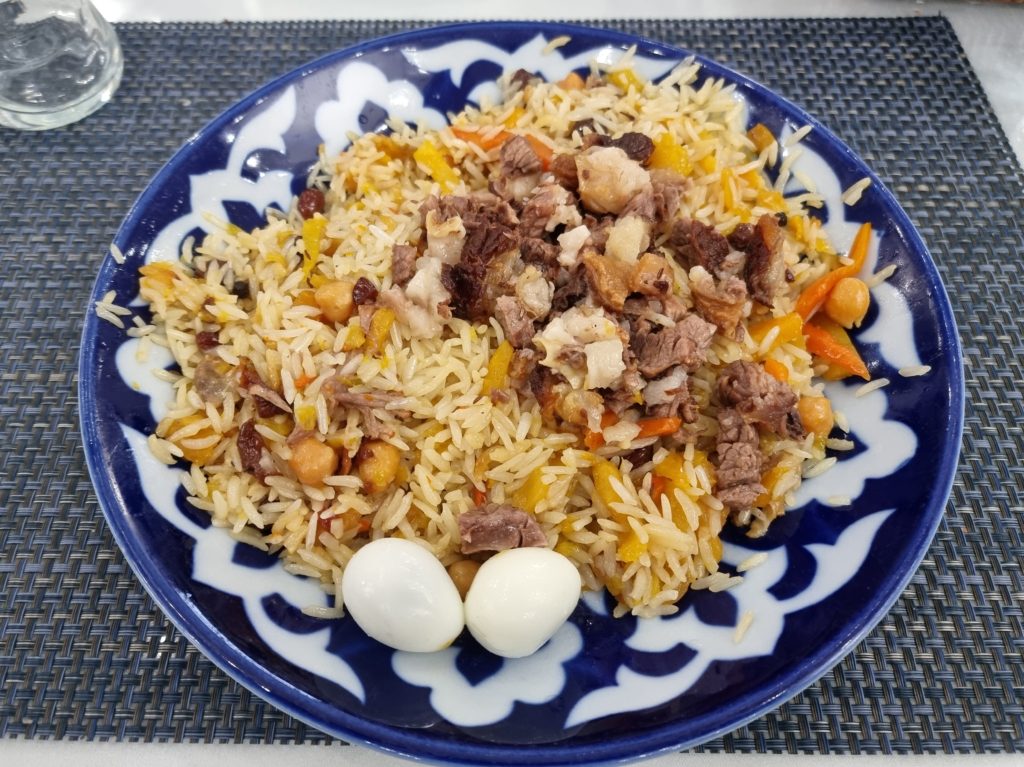
Besides, you should still be wary of the police. It was not so long ago when Uzbekistan was a police state. Although those days are over, I had an encounter with a policeman who subtly asked for a bribe. I then – also subtly – changed the subject and that was the end of it. Getting affected by corrupt policemen is not as common anymore, but it can still happen.
People were overall nice, though. We experienced one or the other attempt of the locals to overcharge us. In these cases, it was helpful when I used my rusty Turkish to get a better price. Uzbek is also a Turkic language, and the two peoples understand each other. Travelers who speak neither Russian nor Turkish will probably be a bit helpless in one or the other situation. English and other foreign languages are not widespread in Uzbekistan.
By the way, we were almost the only tourists in the country. We saw two more tourists, but apart from that, not many people visit Uzbekistan at the moment. This may be due to the fact that Uzbekistan changes the entry rules every two months. Many people probably don’t even know that the country is currently open.
Corona numbers are at a rather low level in April 2021. Last year, the country had a peak with about 700 new infections per day on average (out of a population of 34 million). For comparison, my home country, Switzerland, had 10,000 new infections per day at its peak out of a population of 8.5 million. The fact that virtually all of the Uzbeks we talked to had already had Corona (including their entire family) suggests that the country either keeps the numbers low on purpose or simply does not test enough. Realistically, it’s a mix of both.
It is by the way interesting how the Uzbeks behave regarding Corona. Outside, practically everyone wears a mask, but as soon as people go inside somewhere, they take them off. Maybe they think that the virus is kept away by walls. For this reason, in trains, for example, a maximum of one third of the people wear a mask. Equally unhelpful is Uzbek wisdom that you should just drink enough beer and eat yogurt to protect yourself from the virus.
In summary, Uzbekistan is a kind of mixture of Turkey and Russia/Soviet Union with sensational buildings and extremely low prices. It’s a country that gives you the opportunity to take enough photos for your social media channels for the next twelve months. Definitely another gem on my journey to the 197 countries of this world.
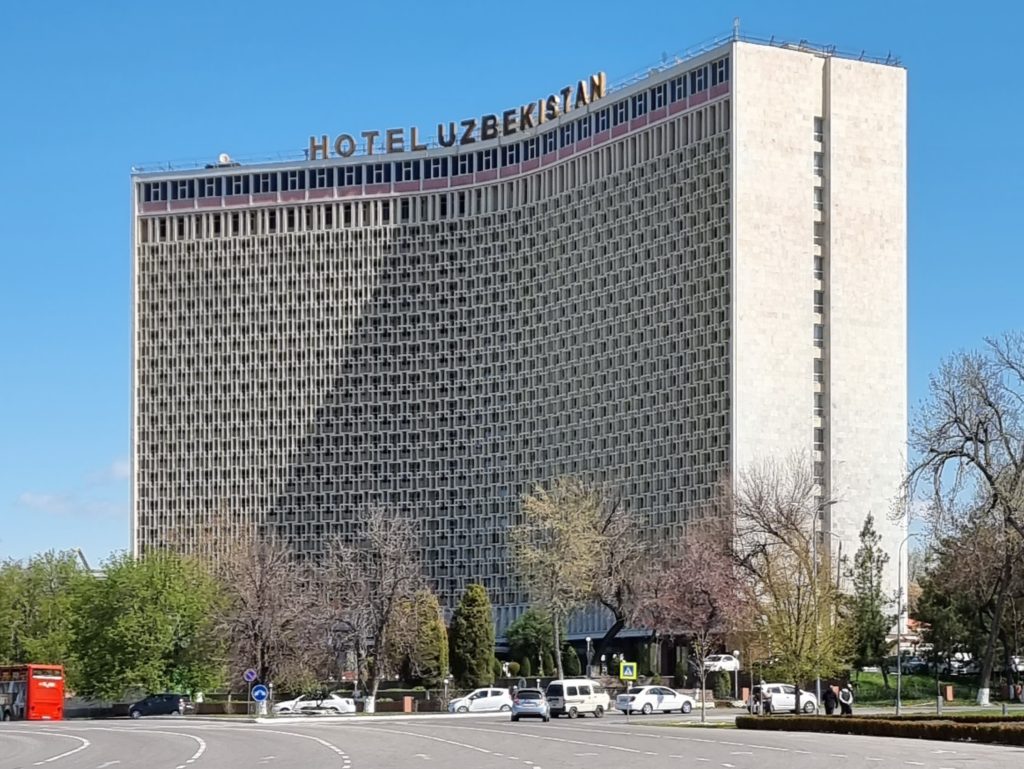
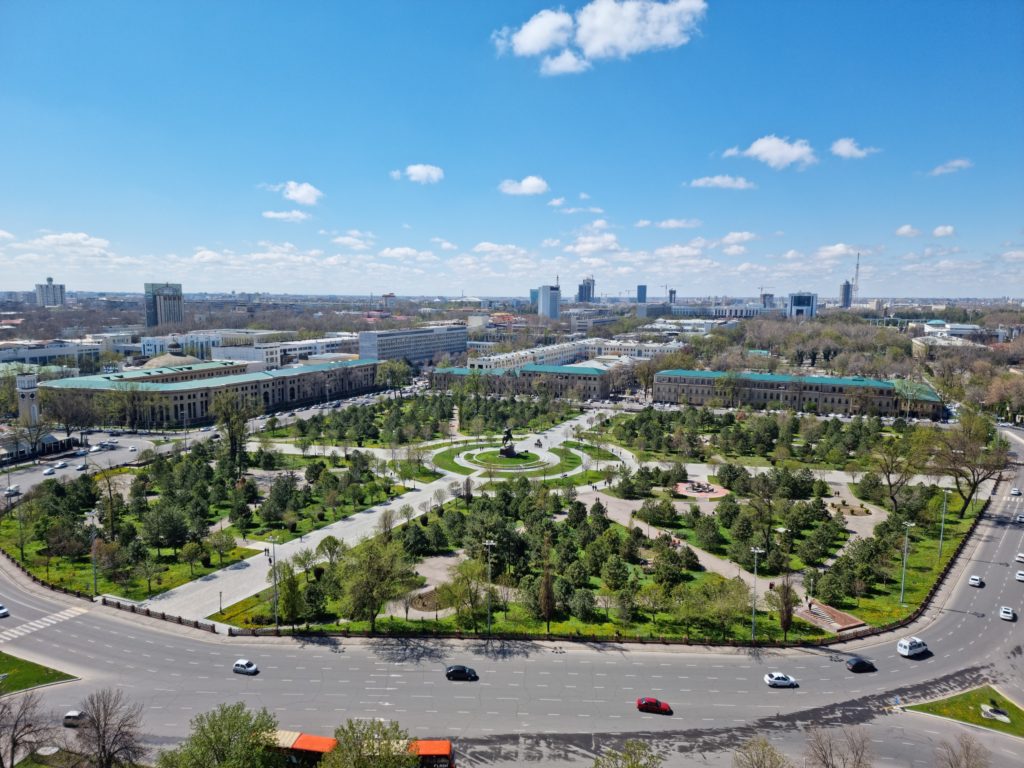
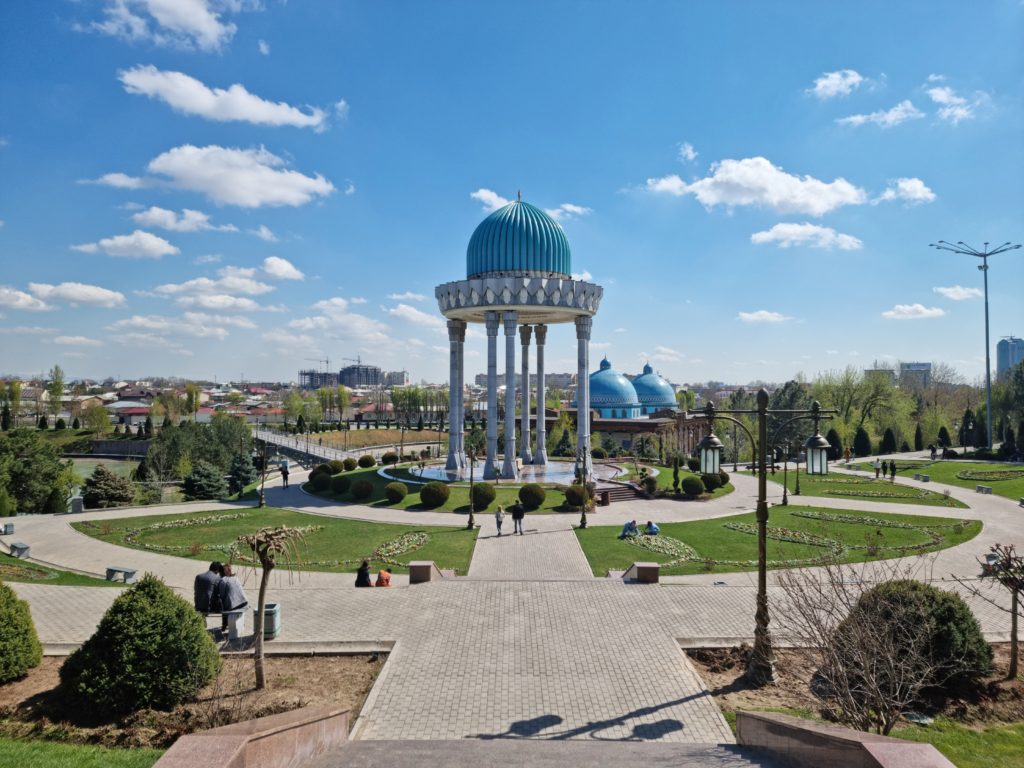
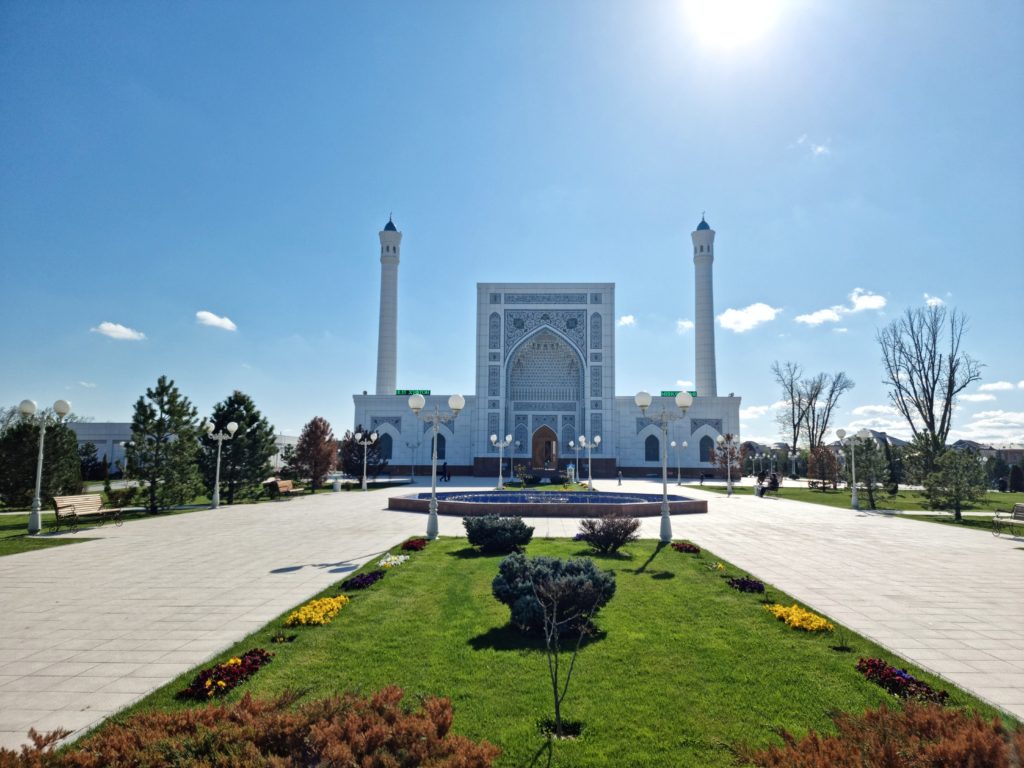
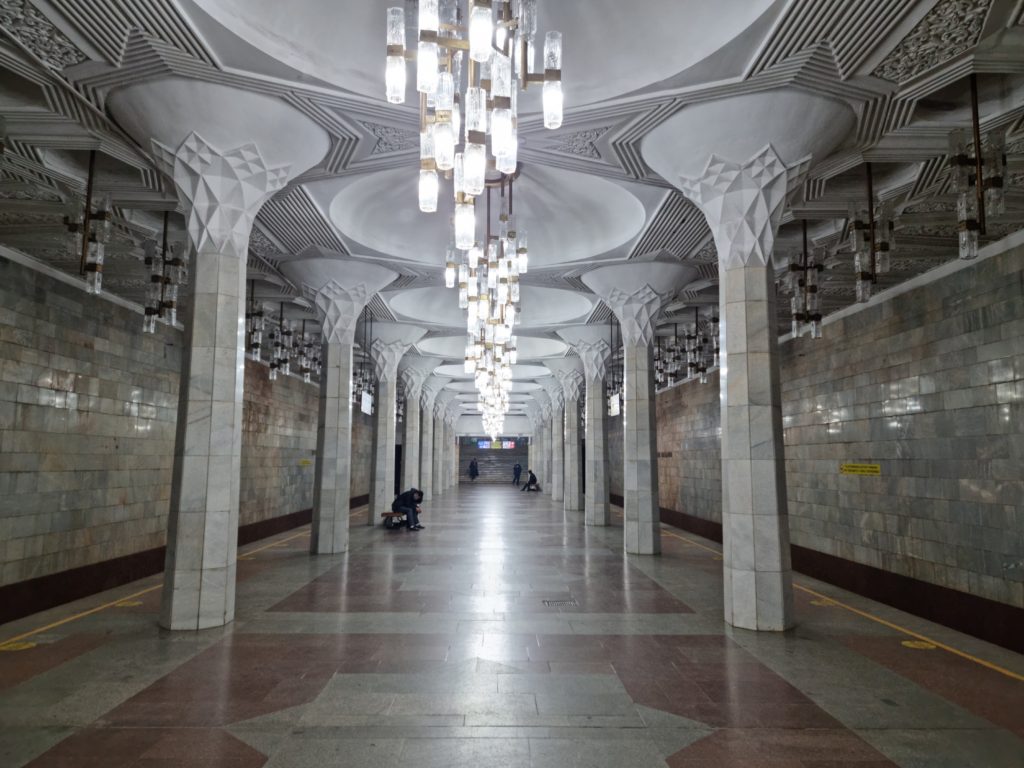
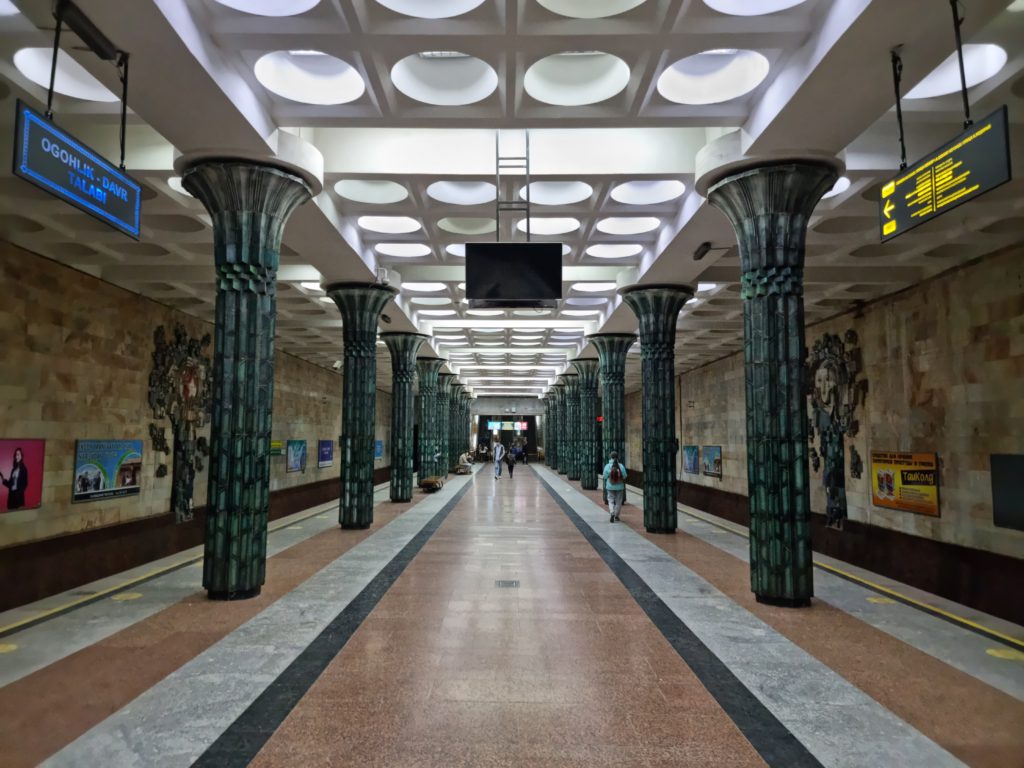
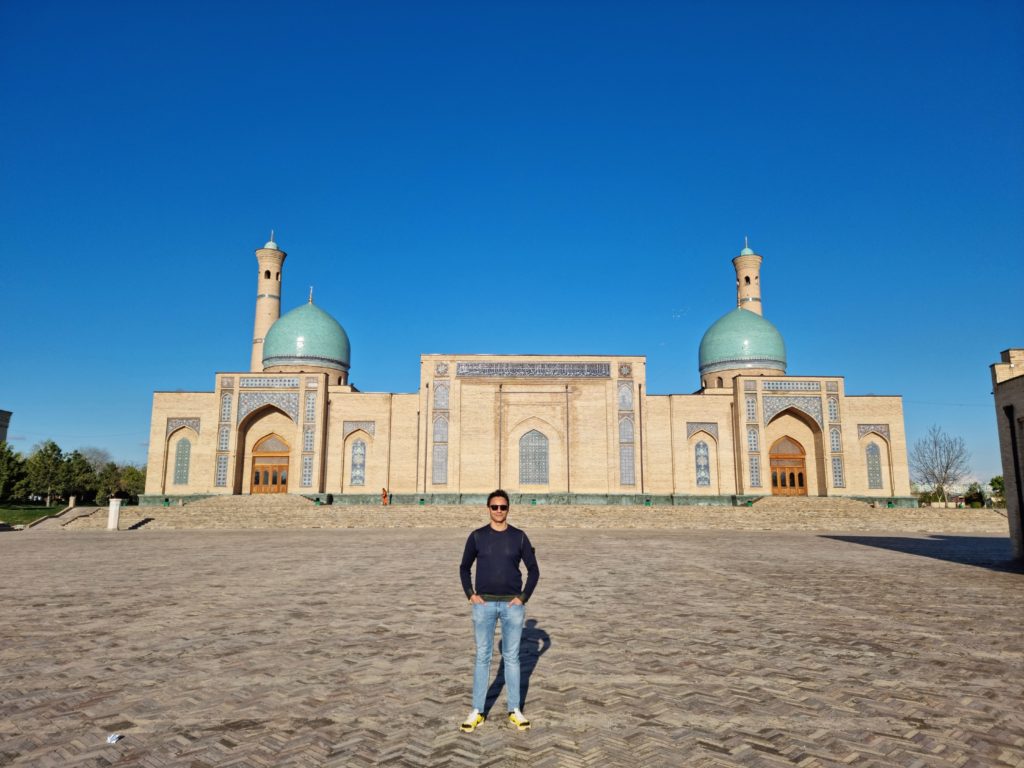
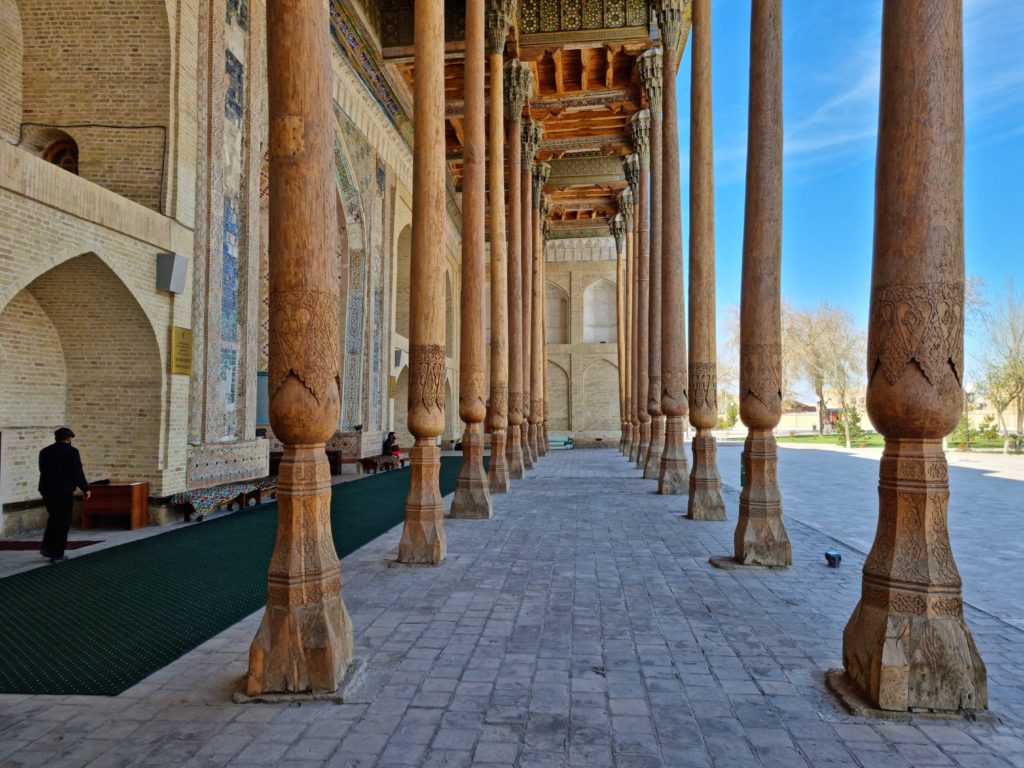
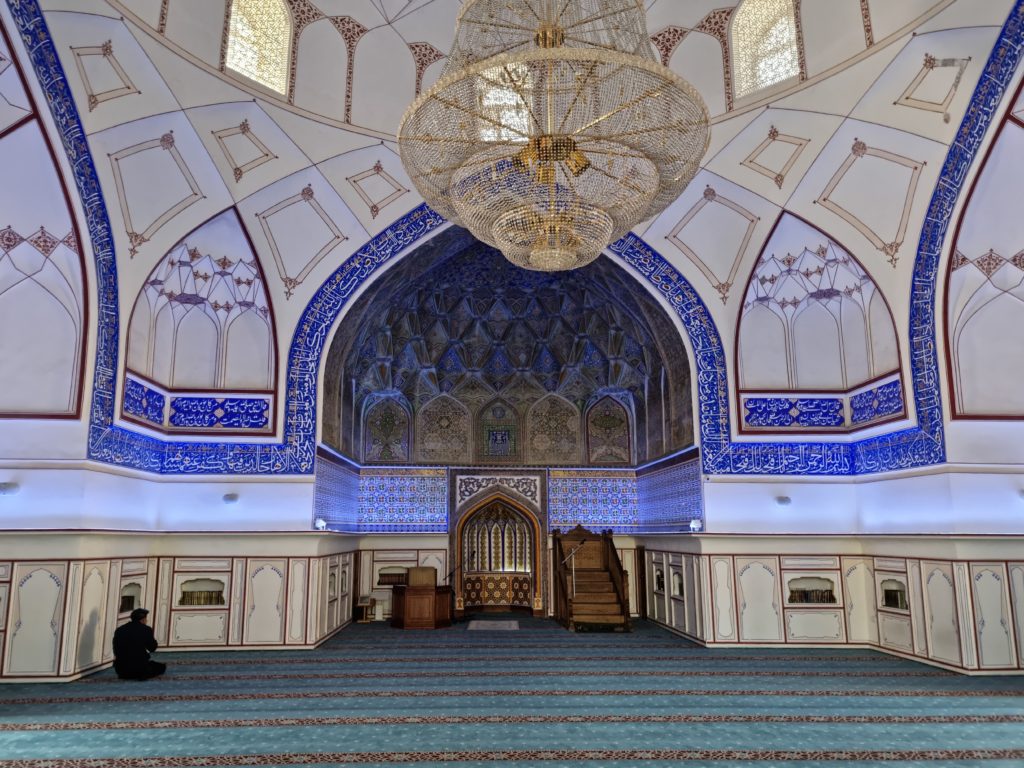
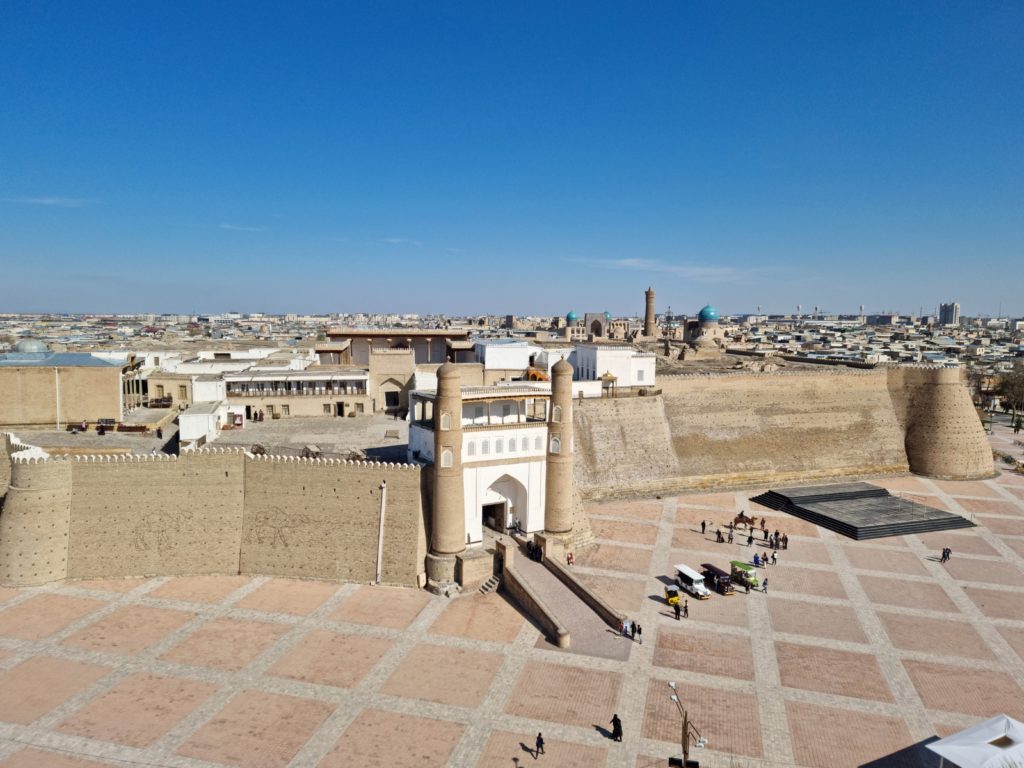
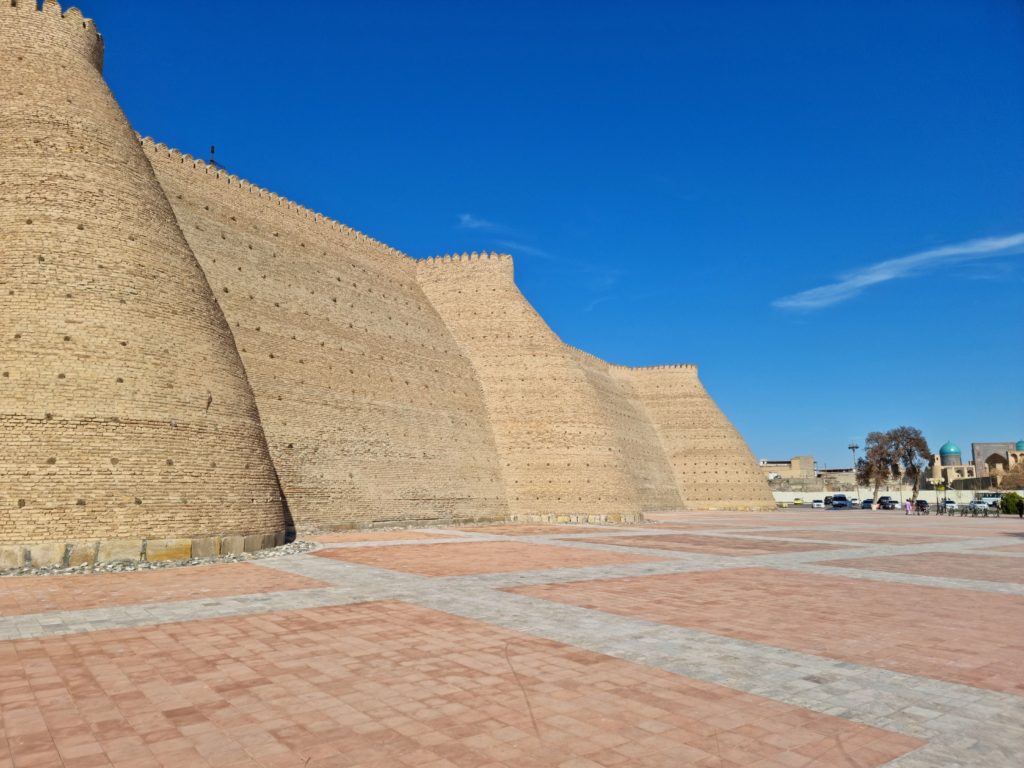
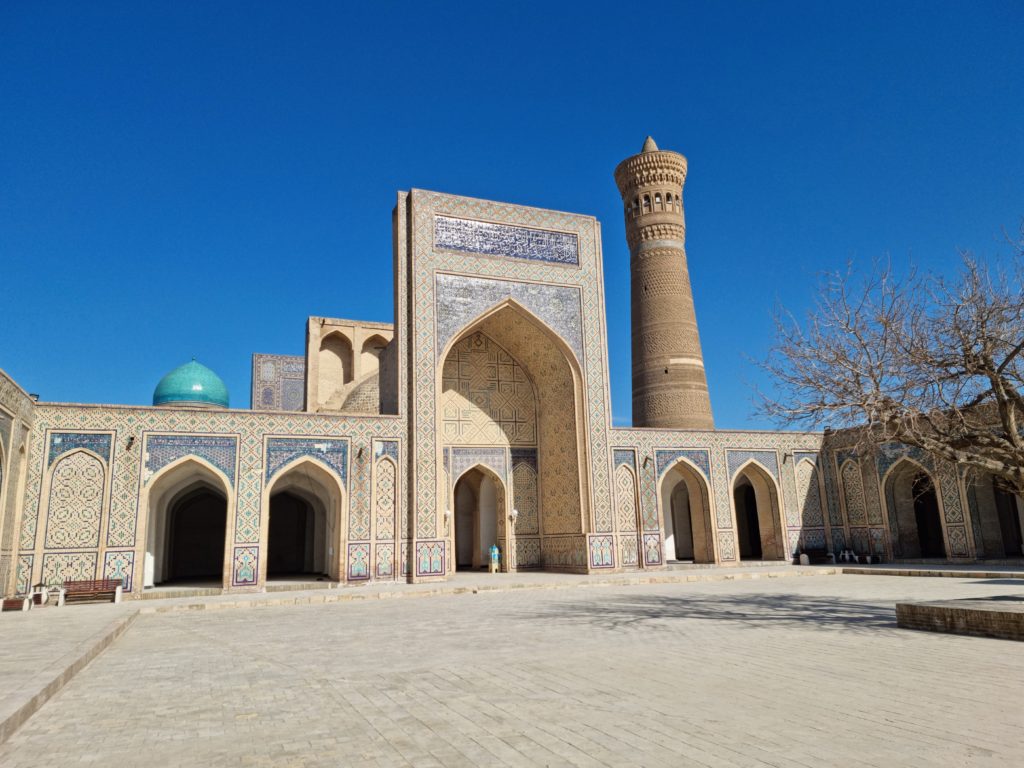
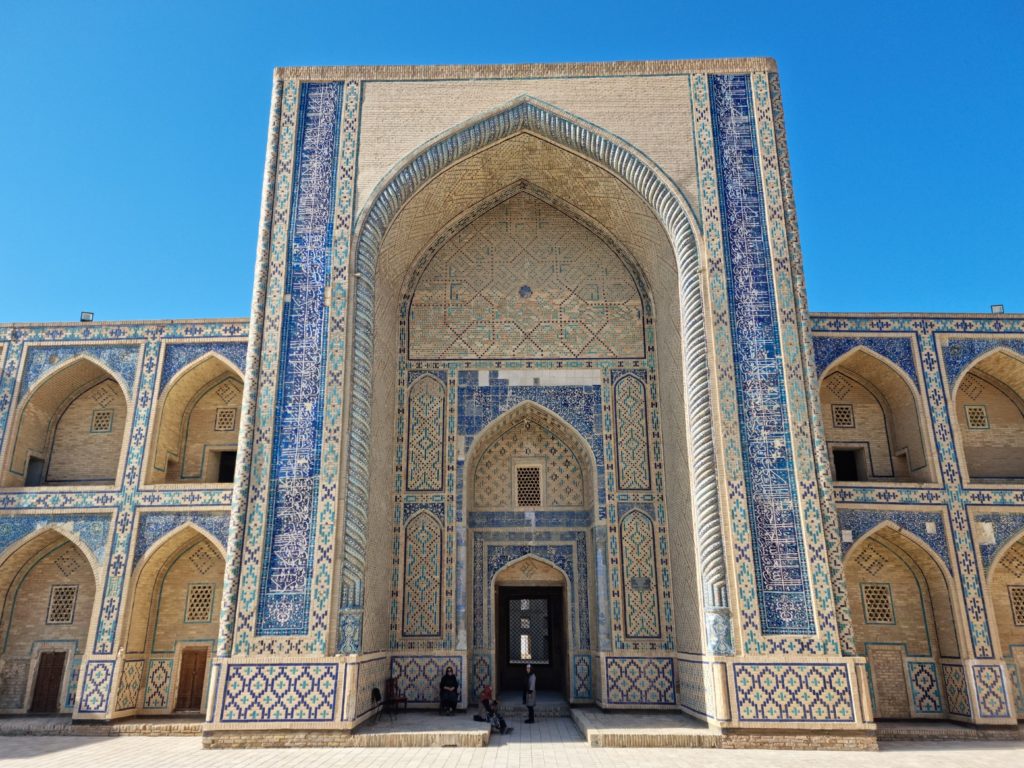
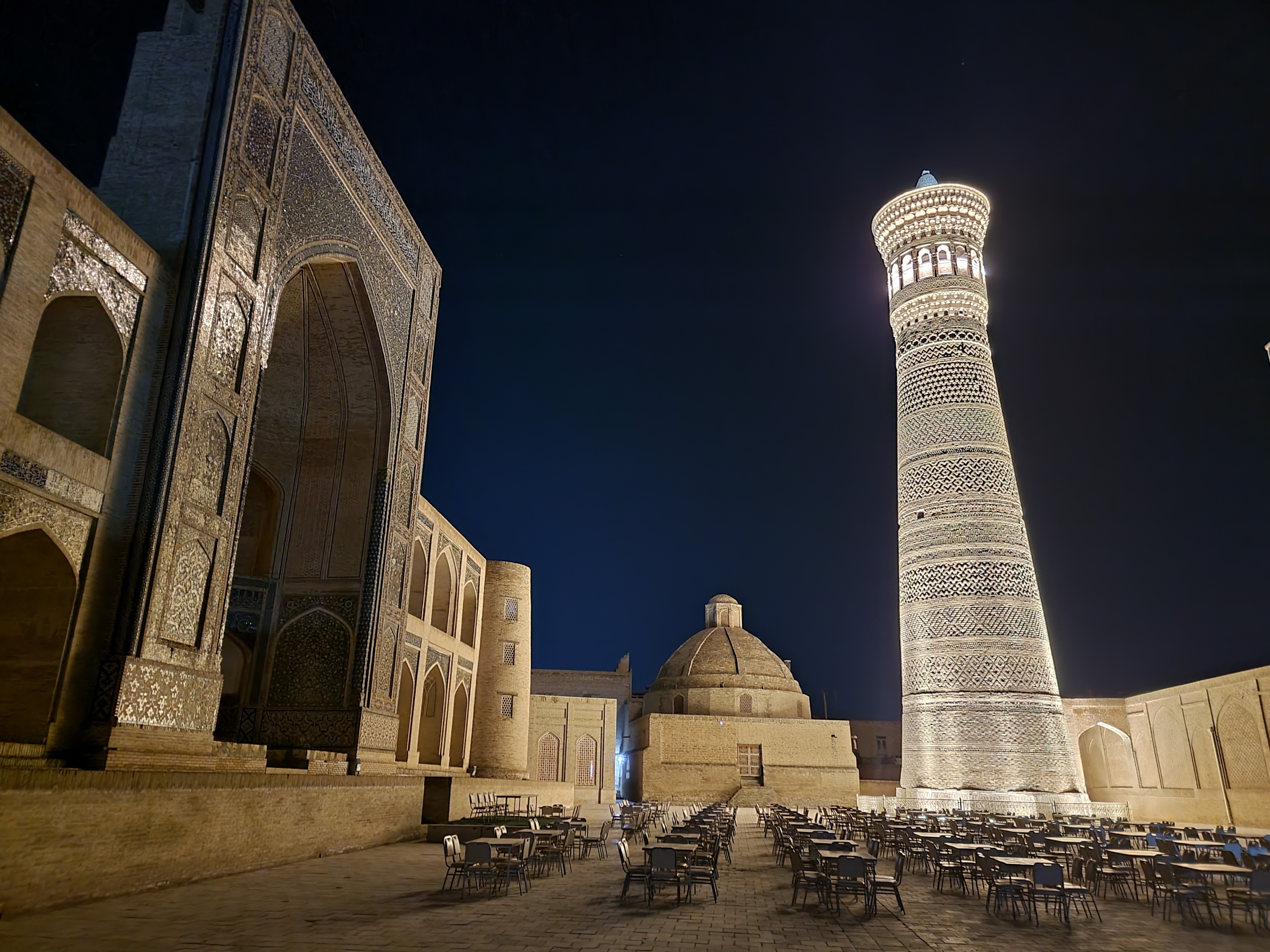
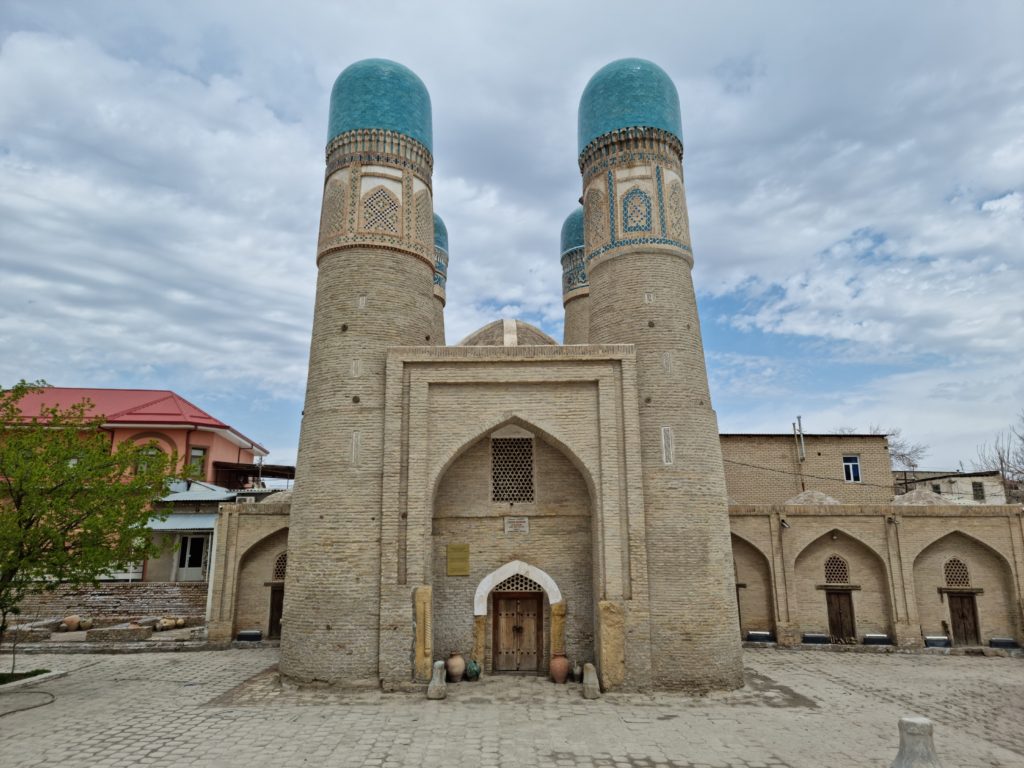
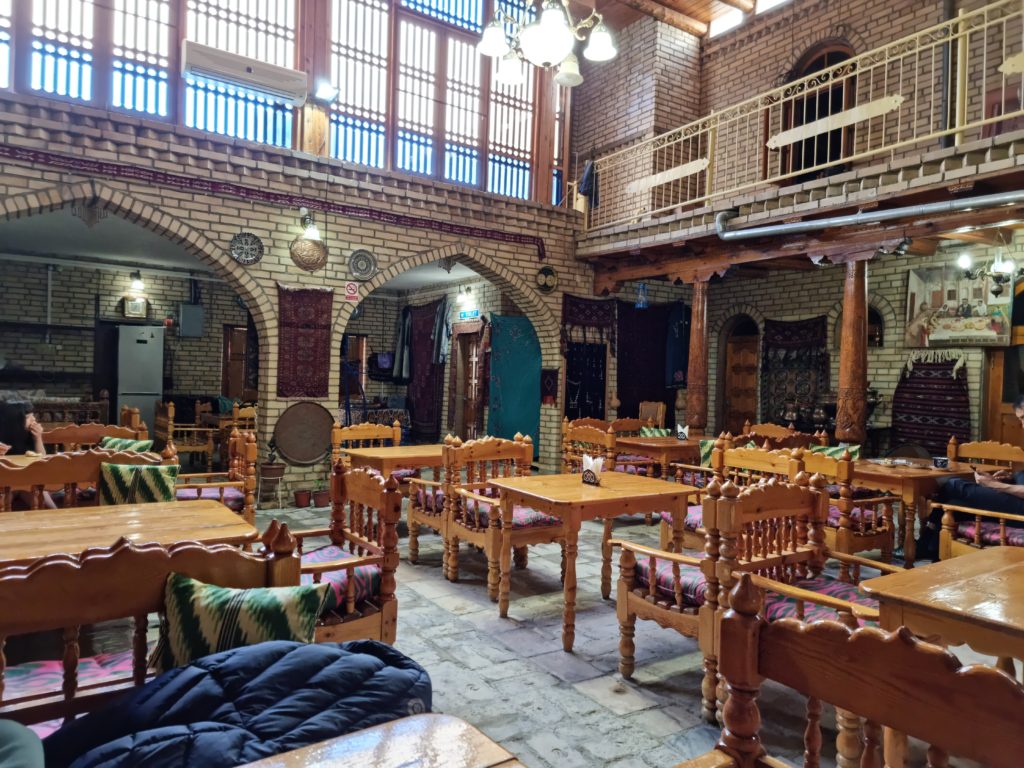
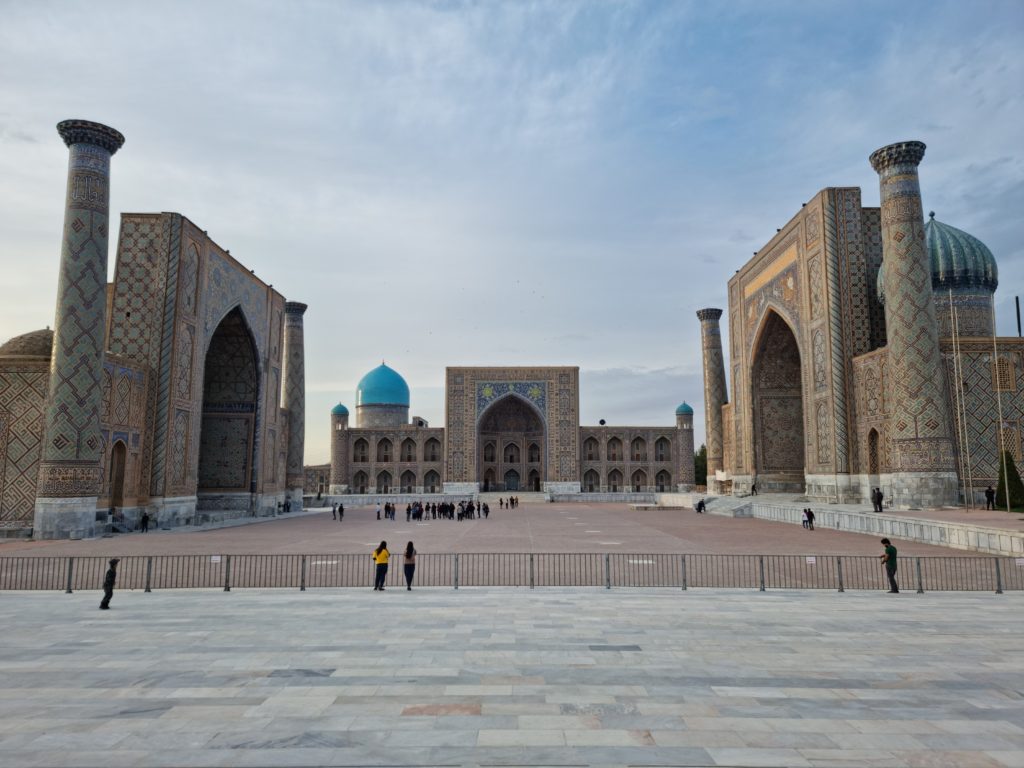
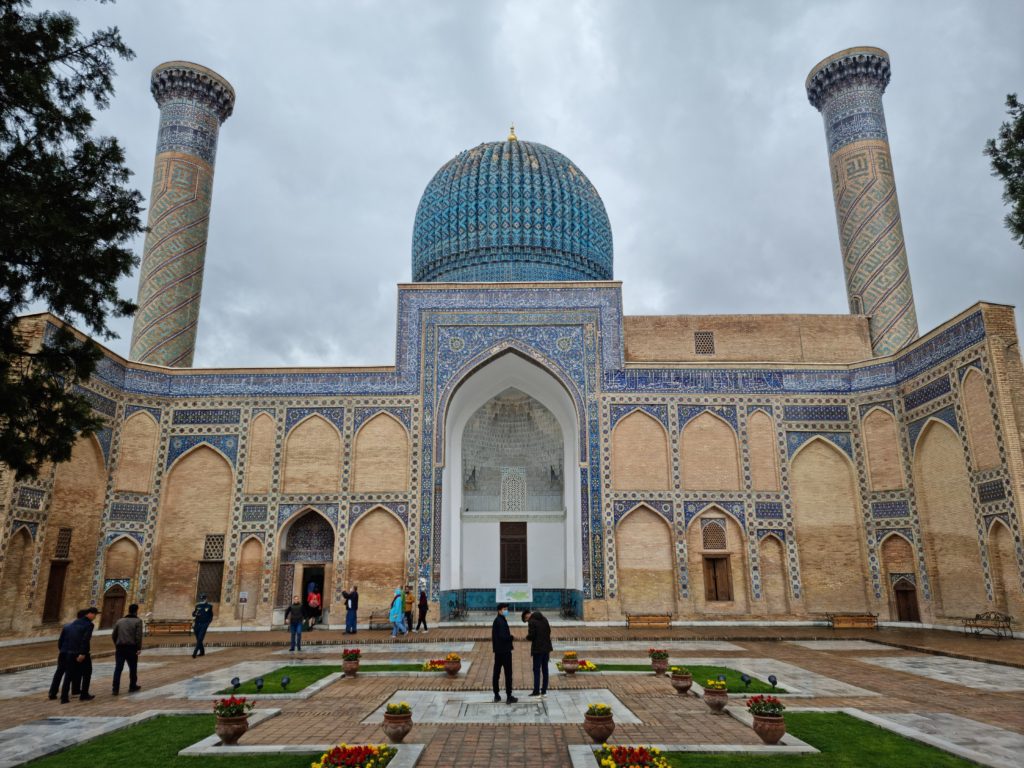
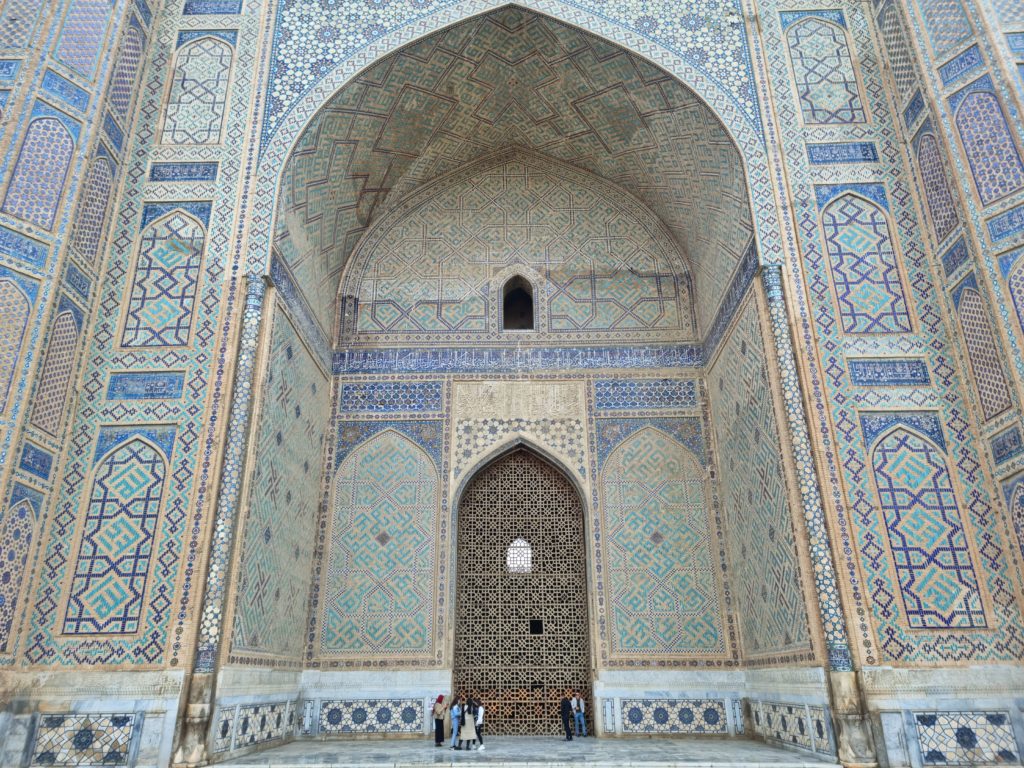
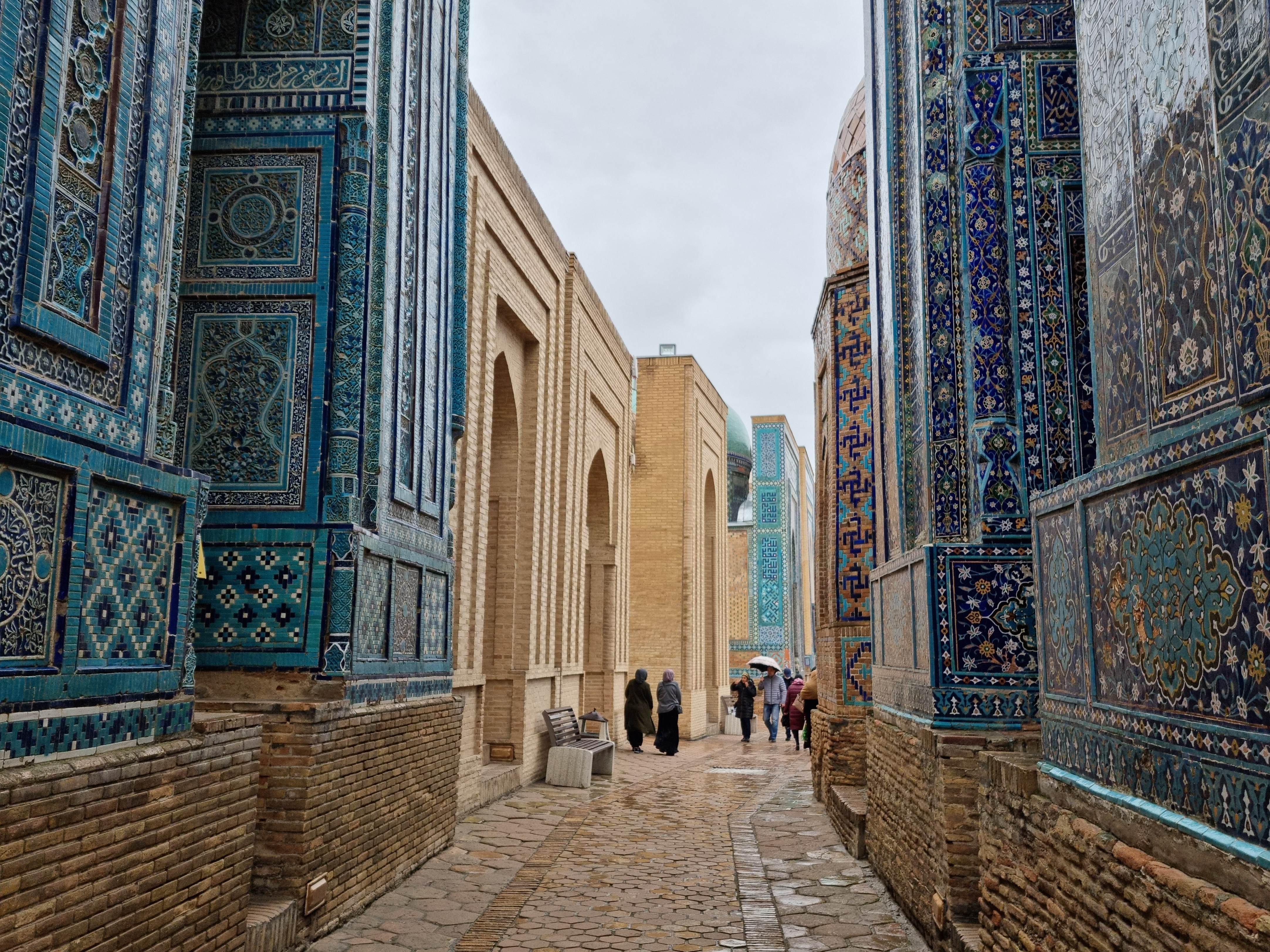
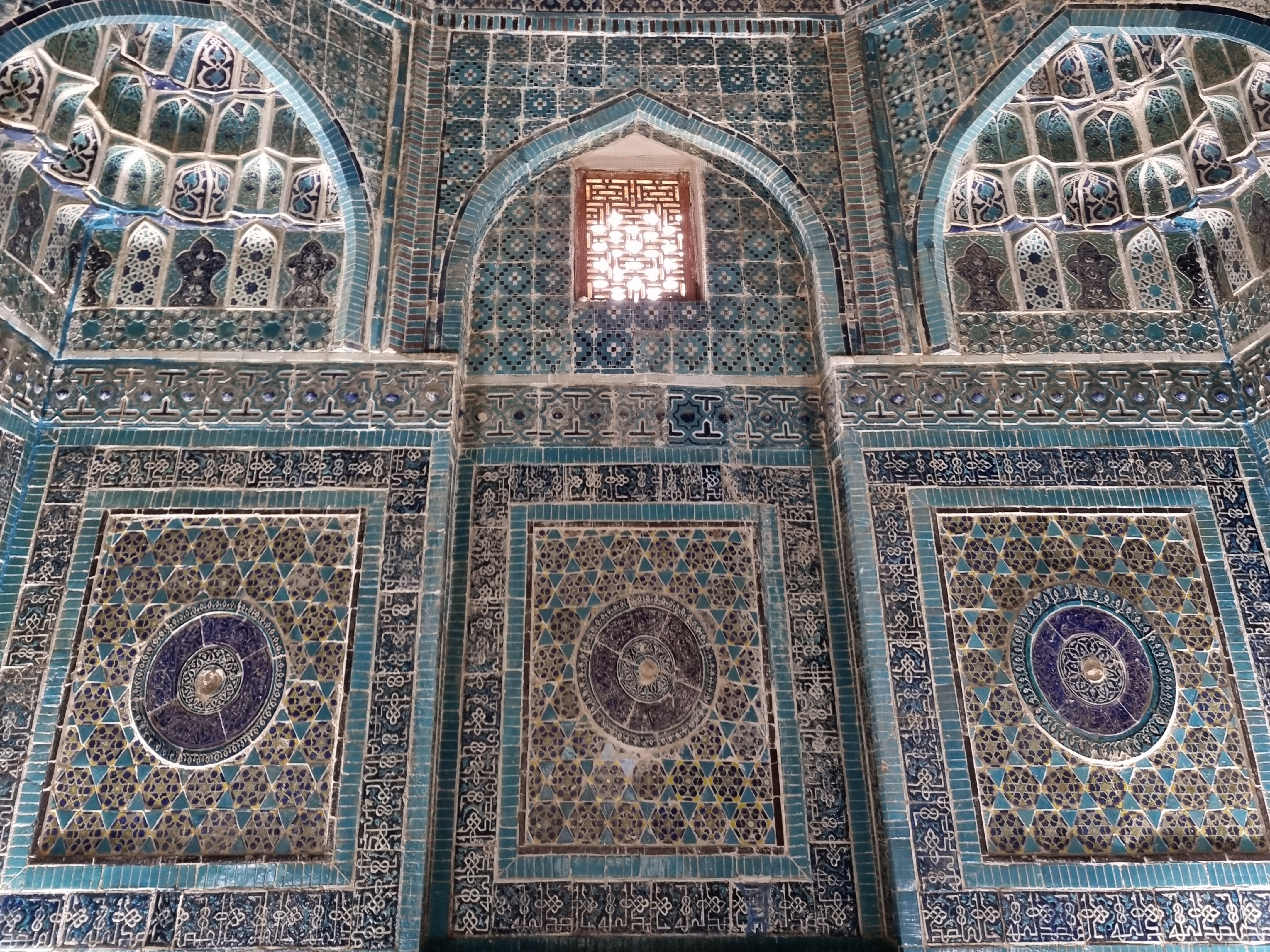
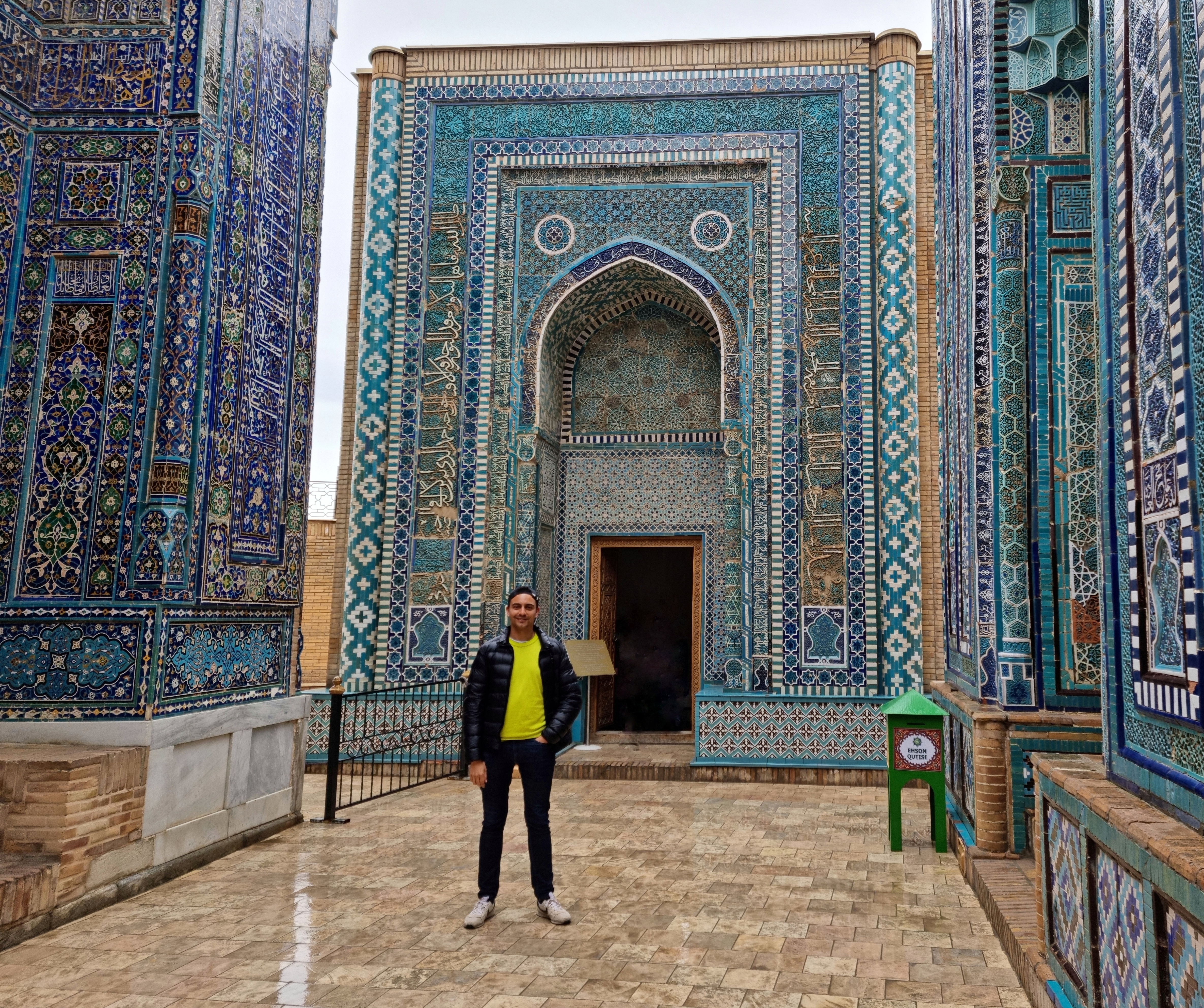
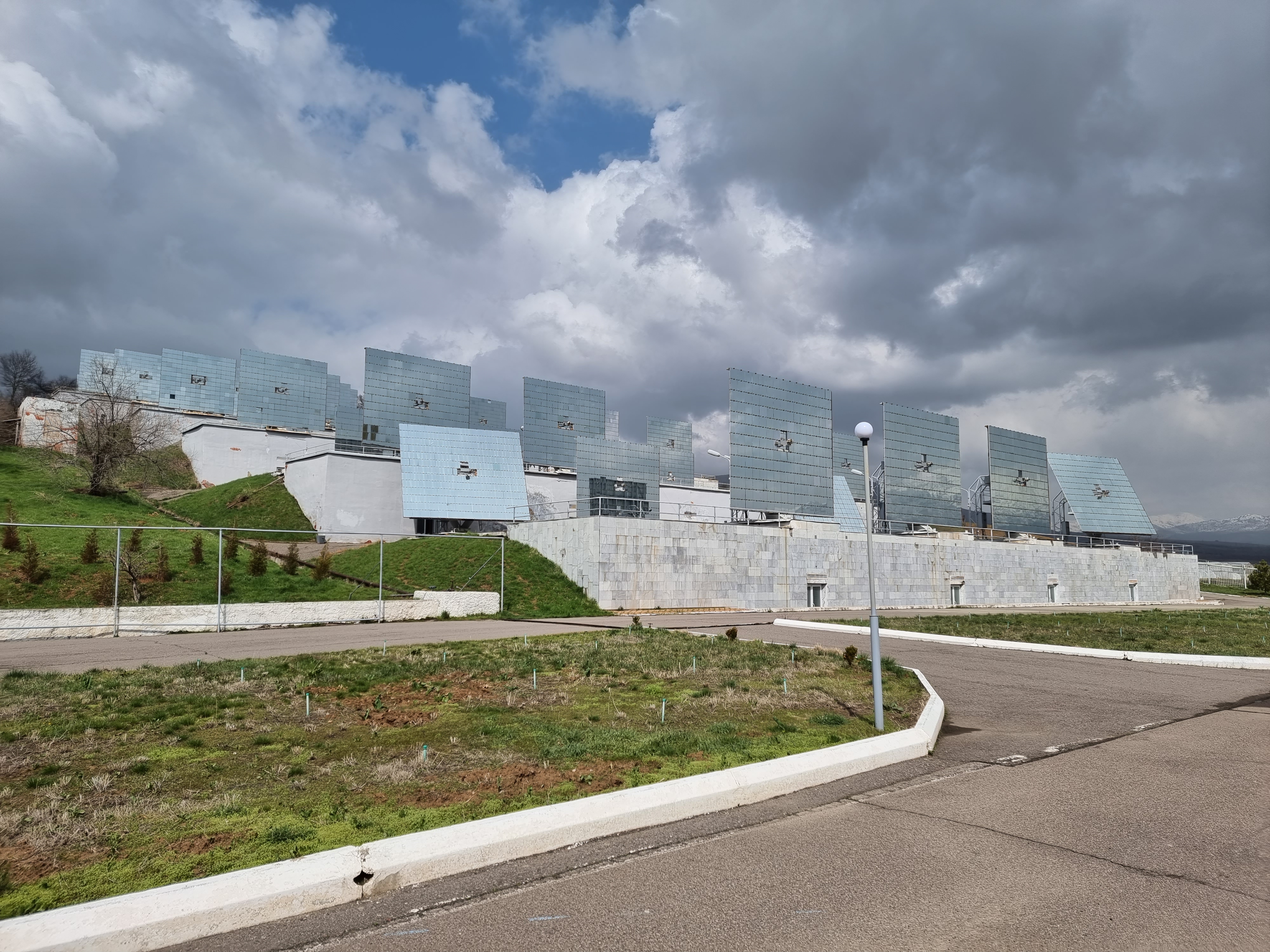
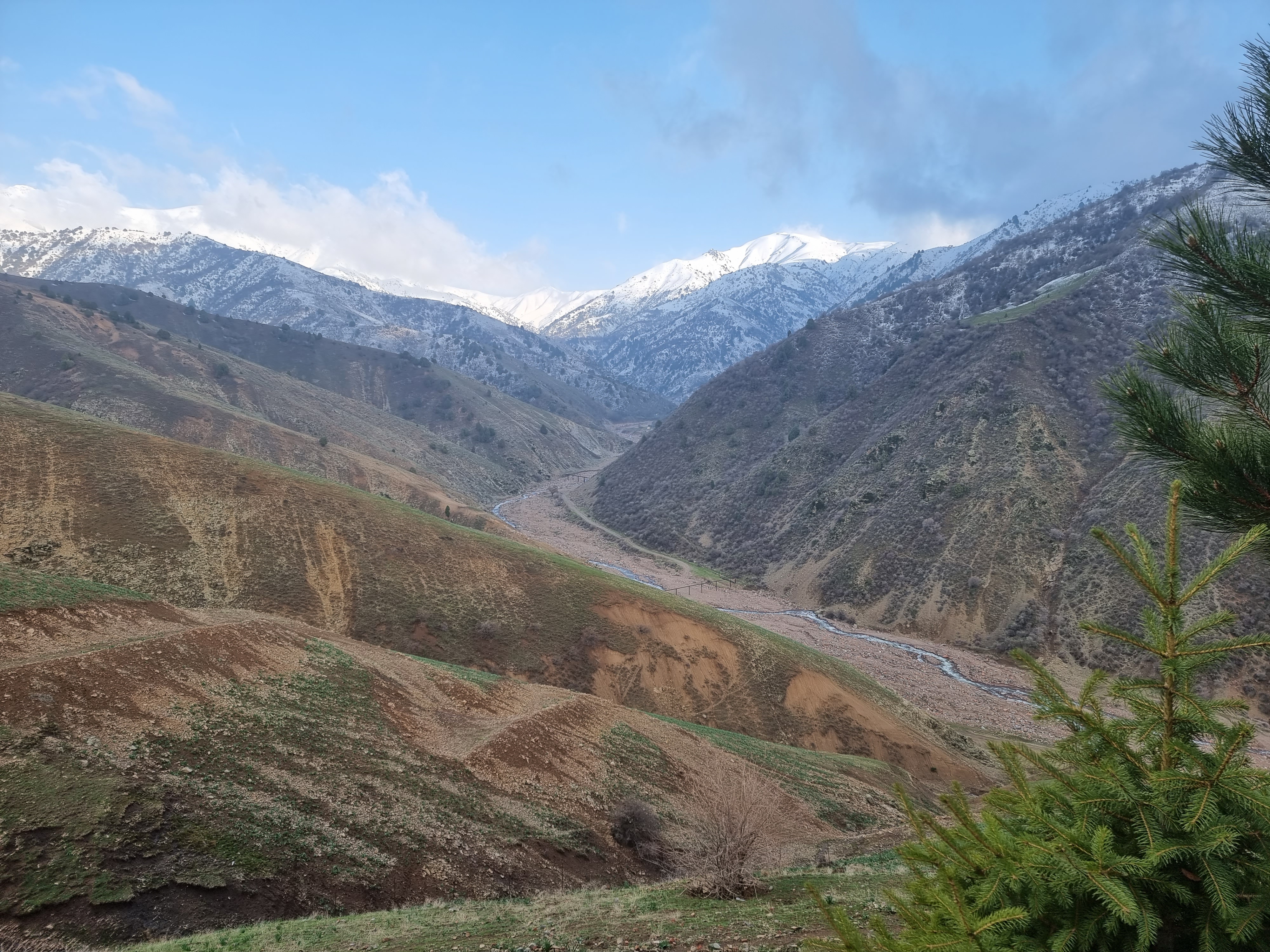
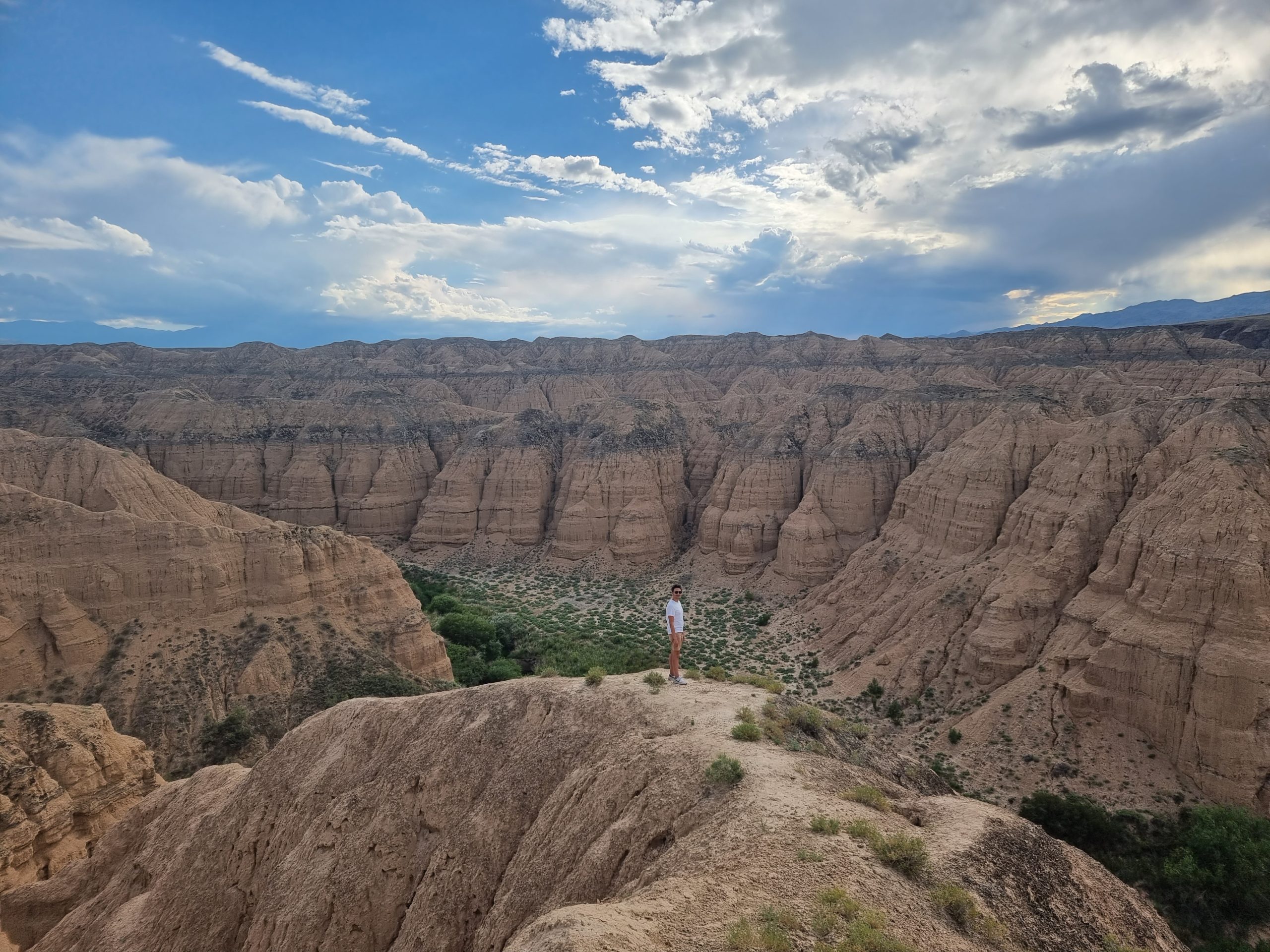
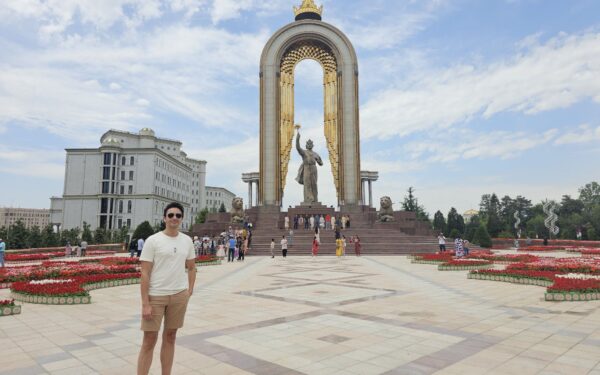
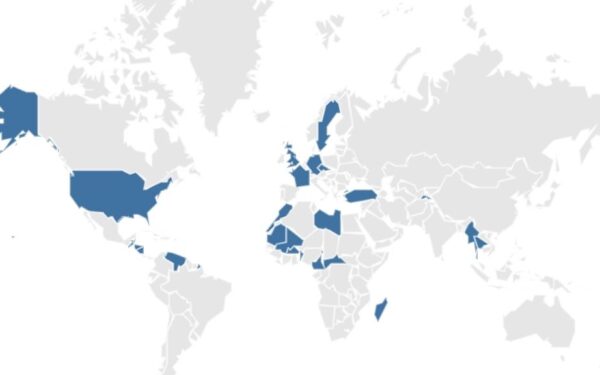
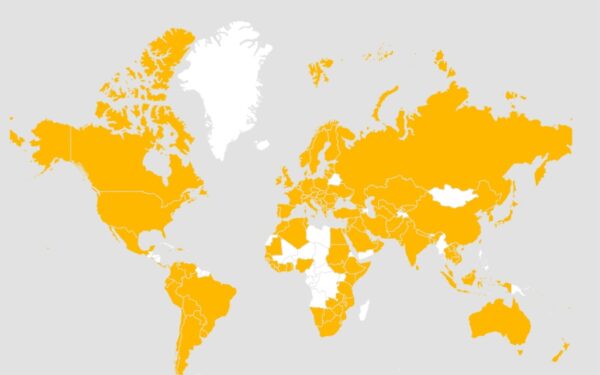
Thank you for your report!
I always love to read your stories and how you travel.